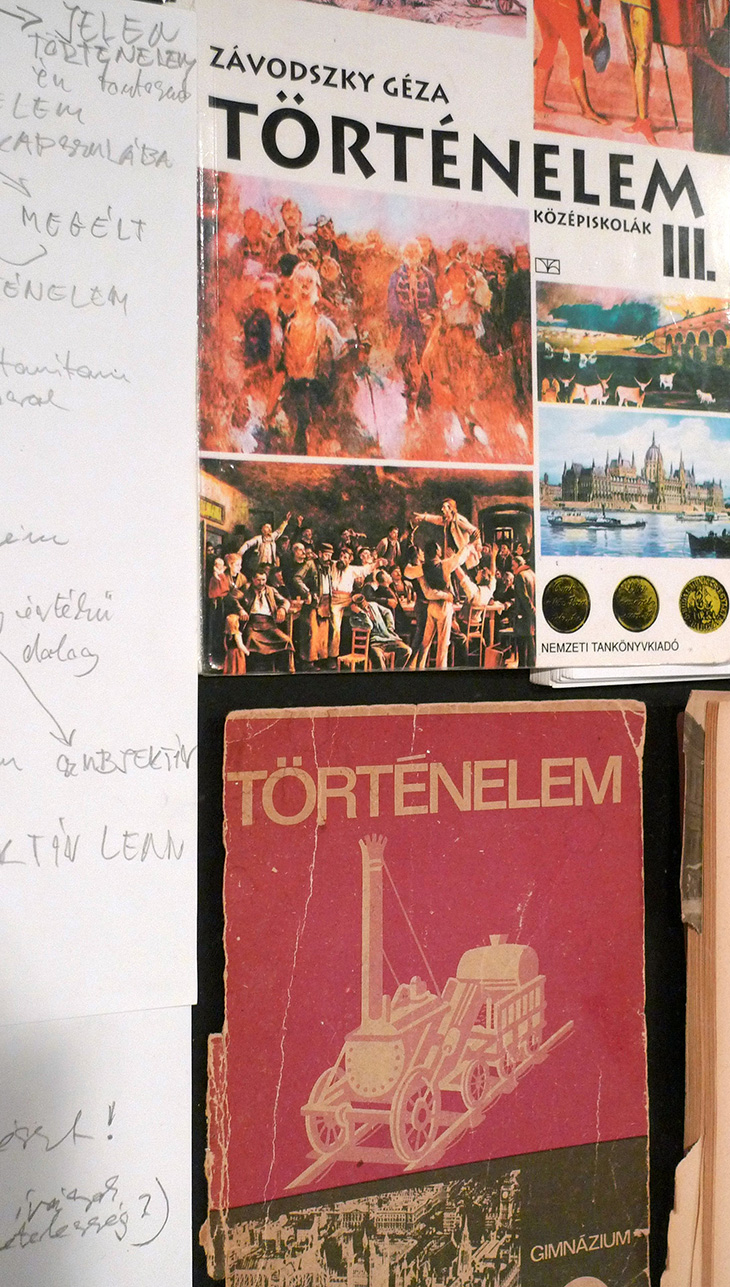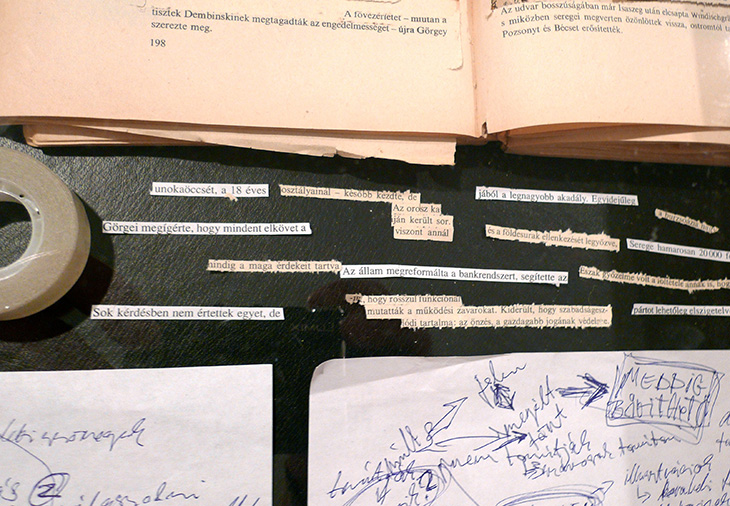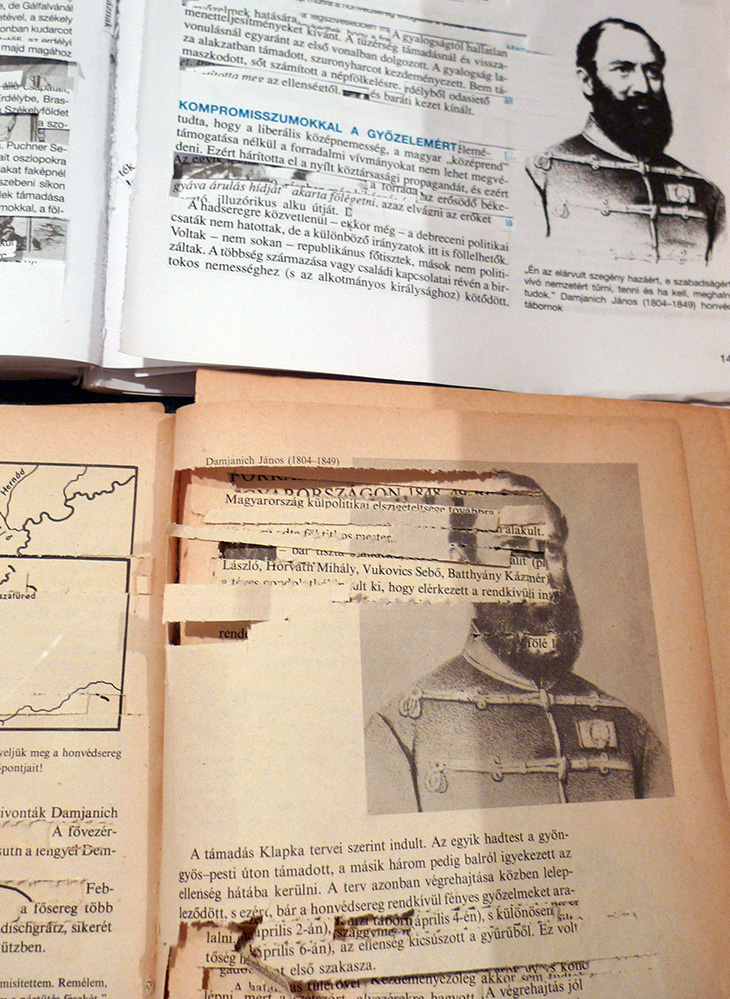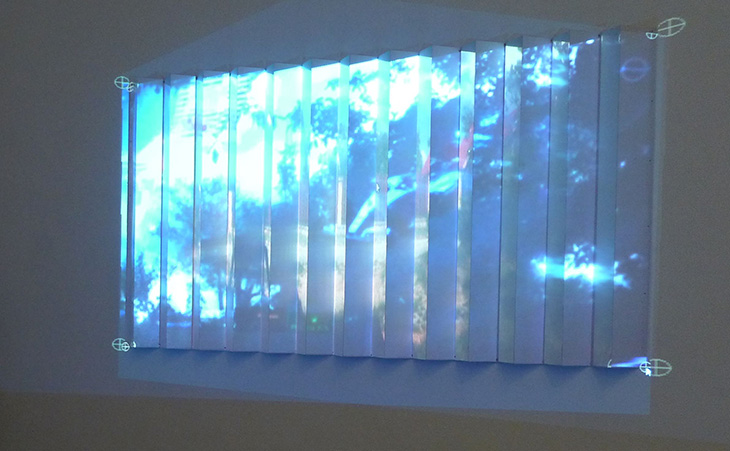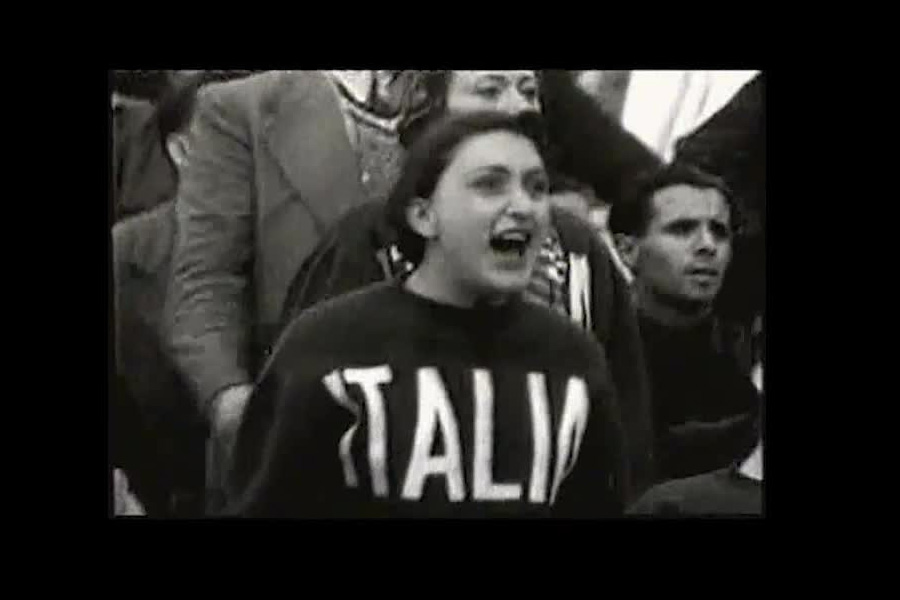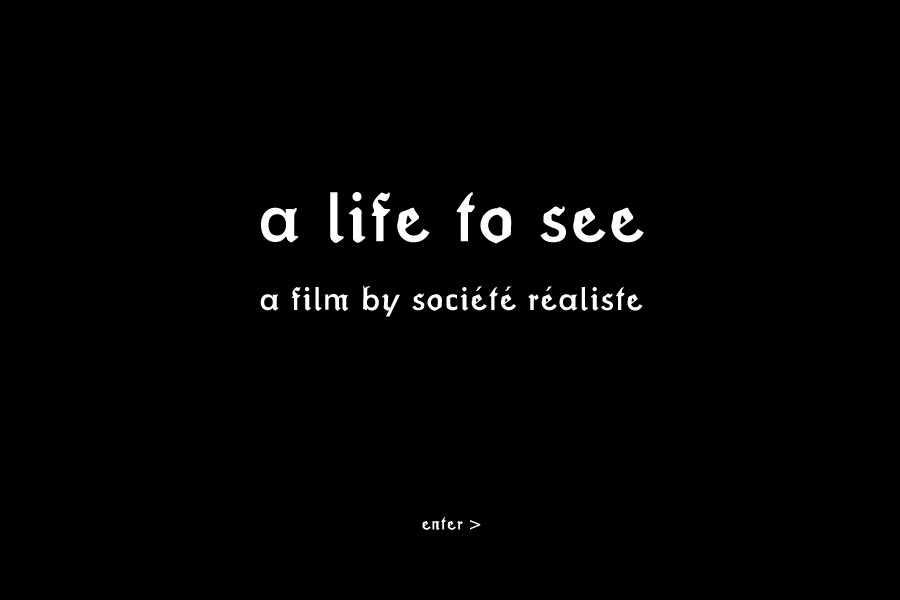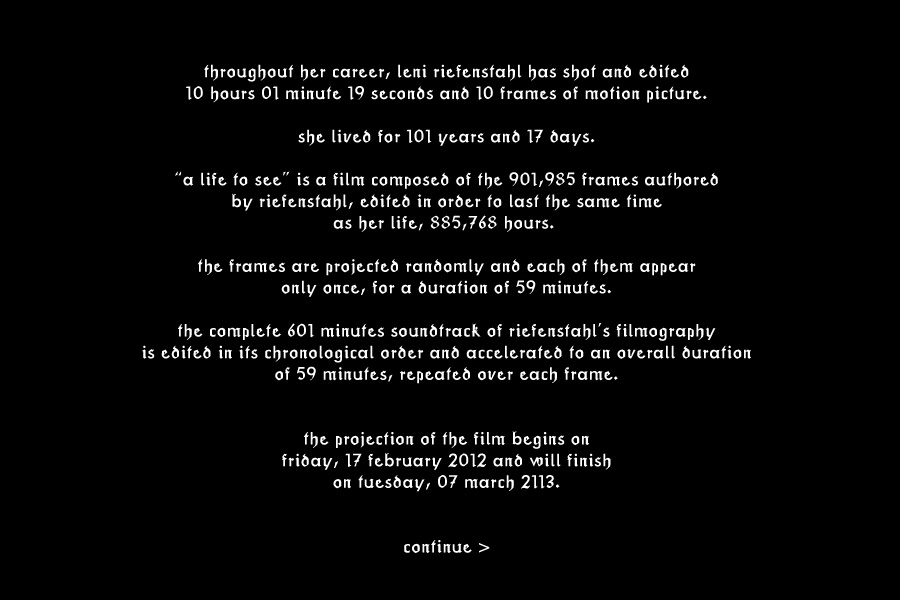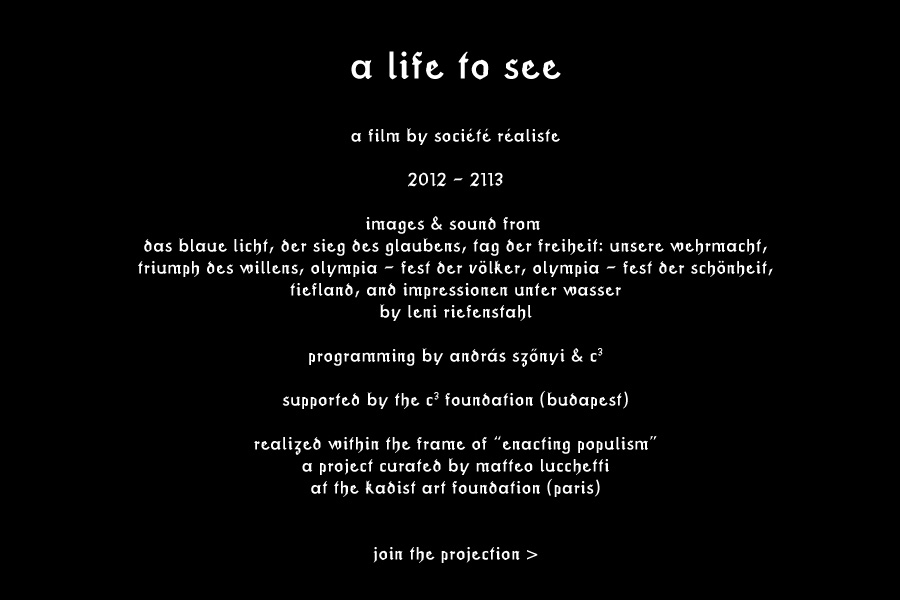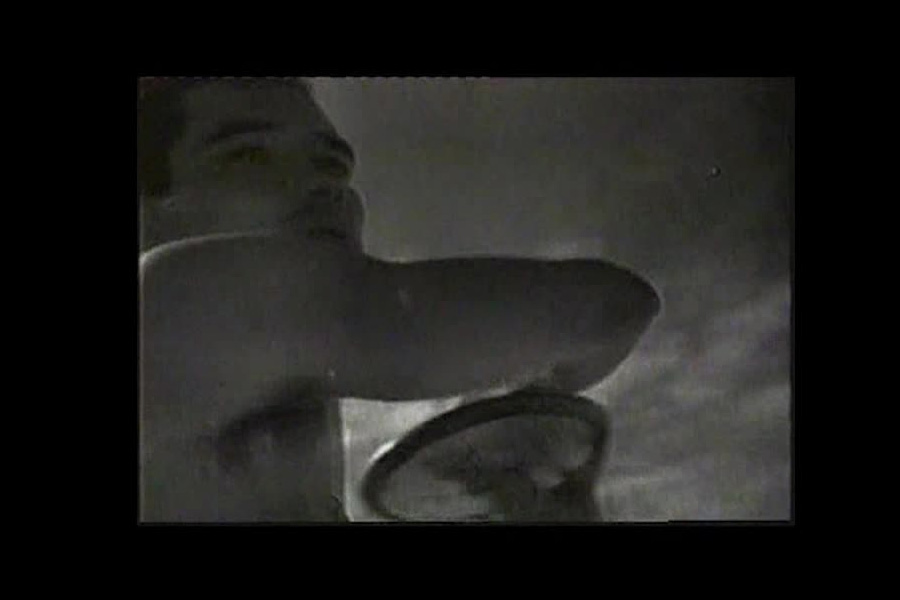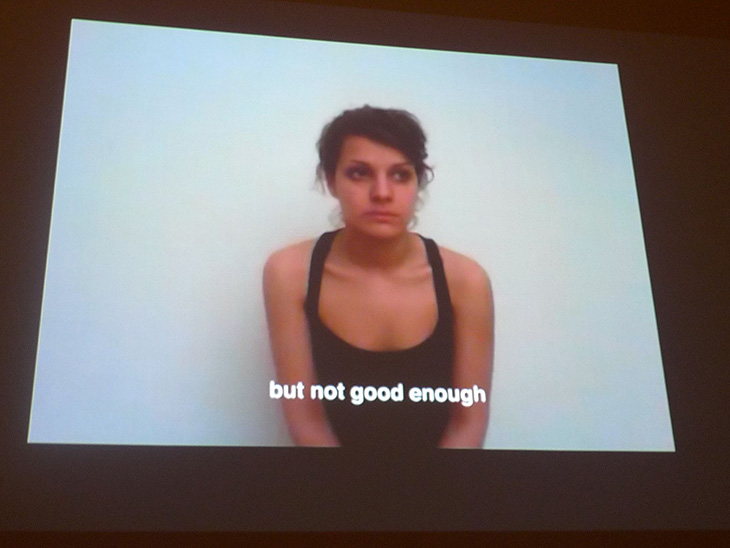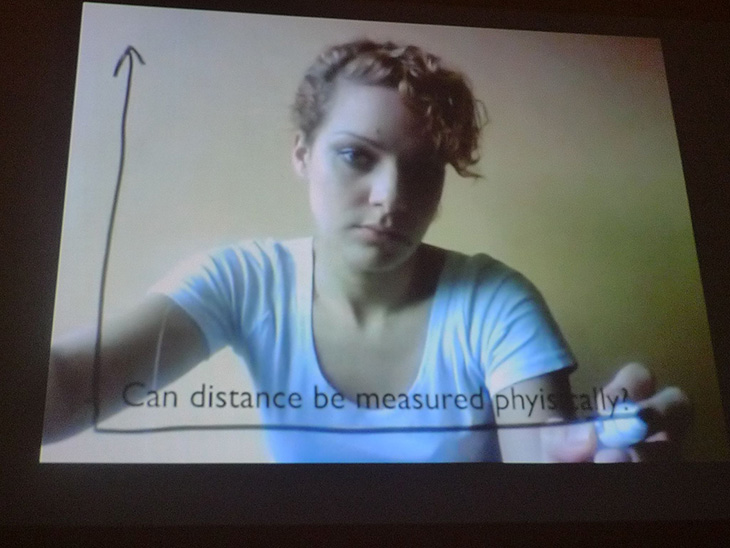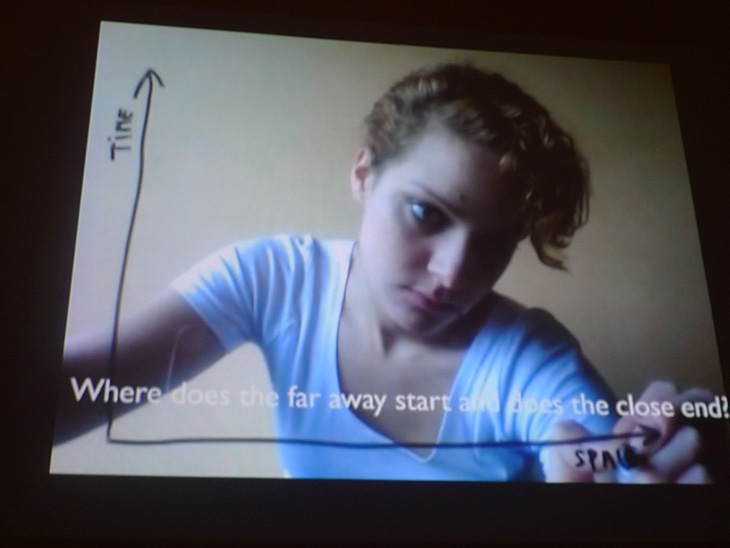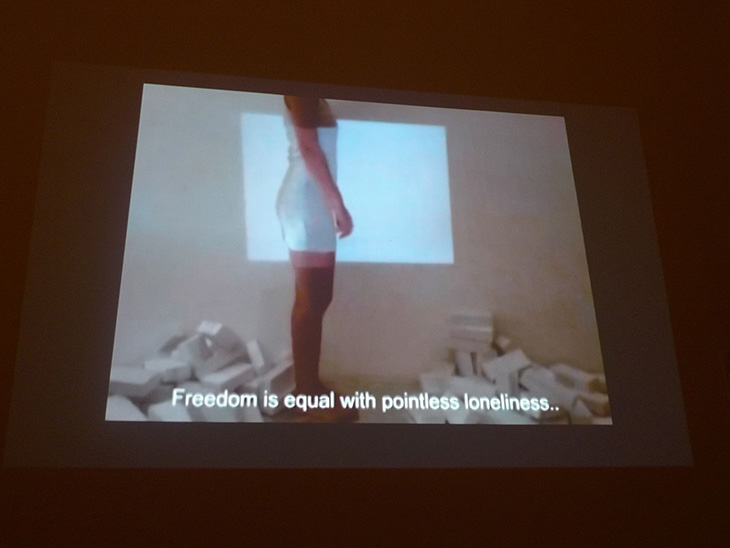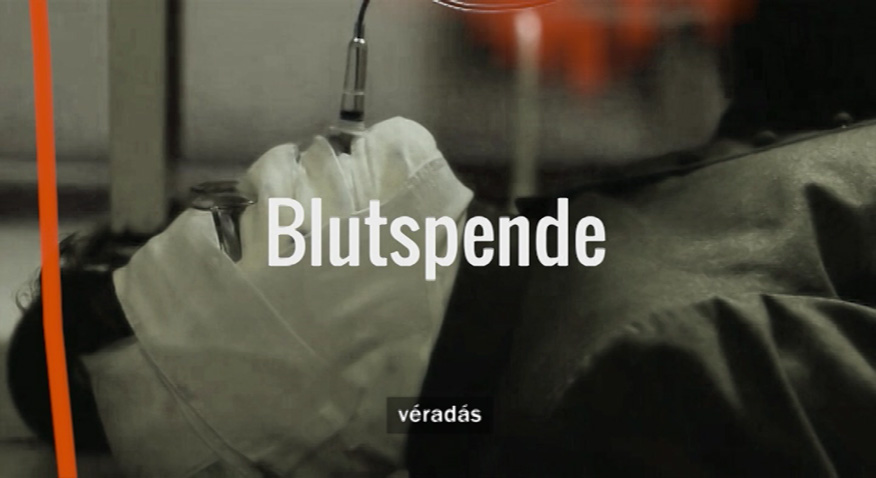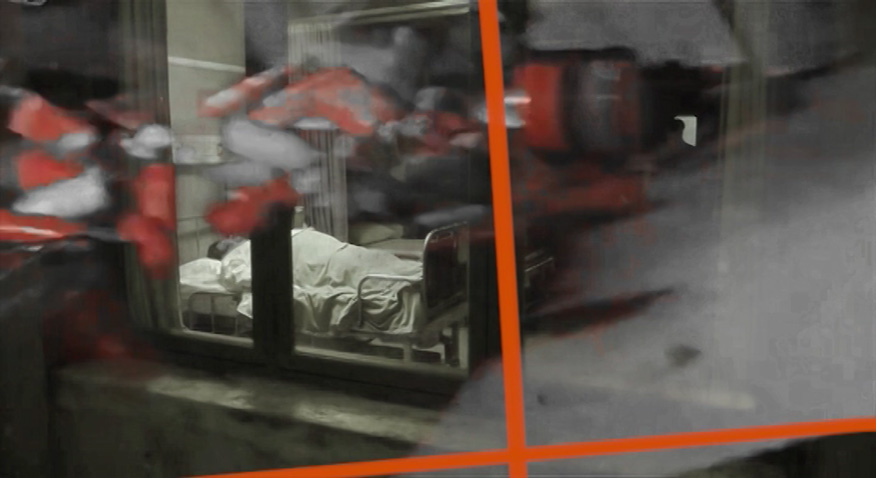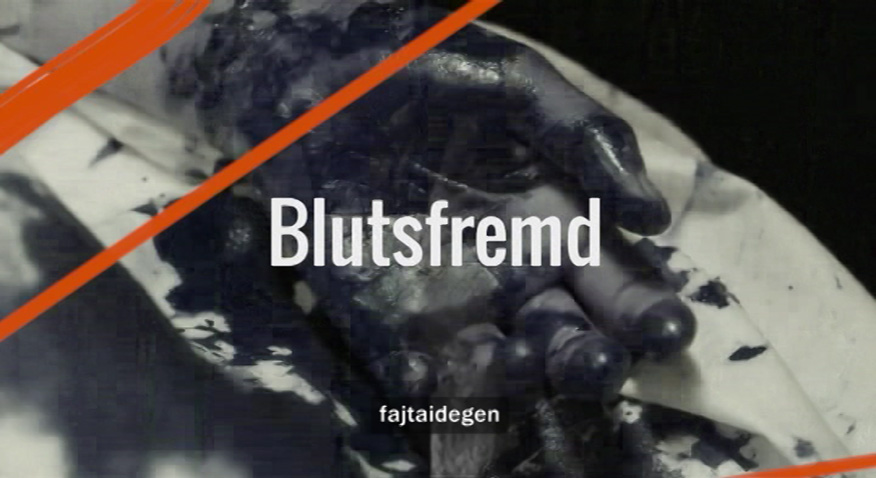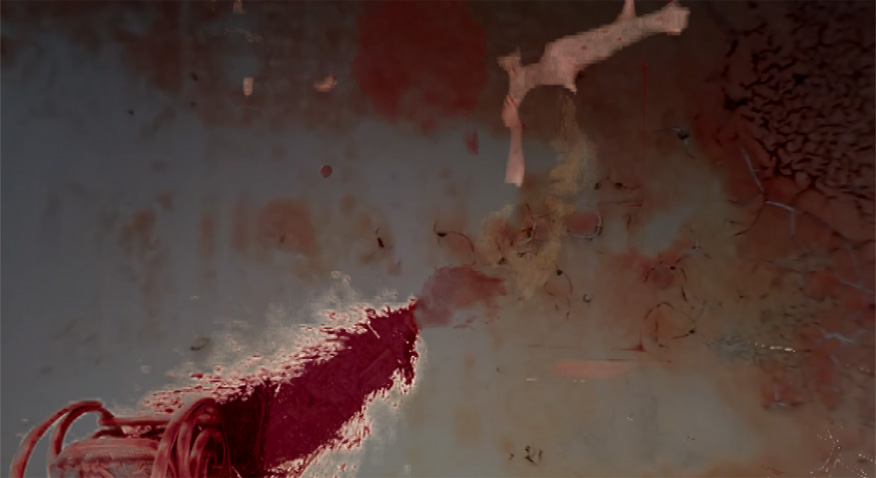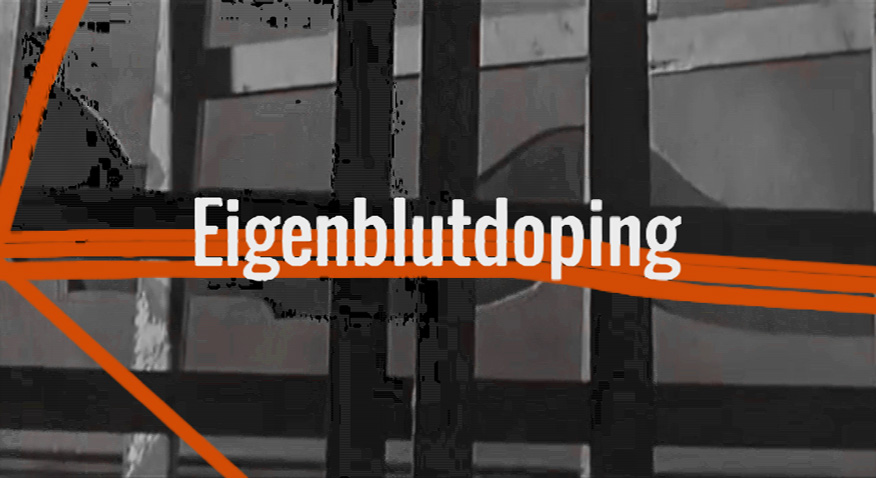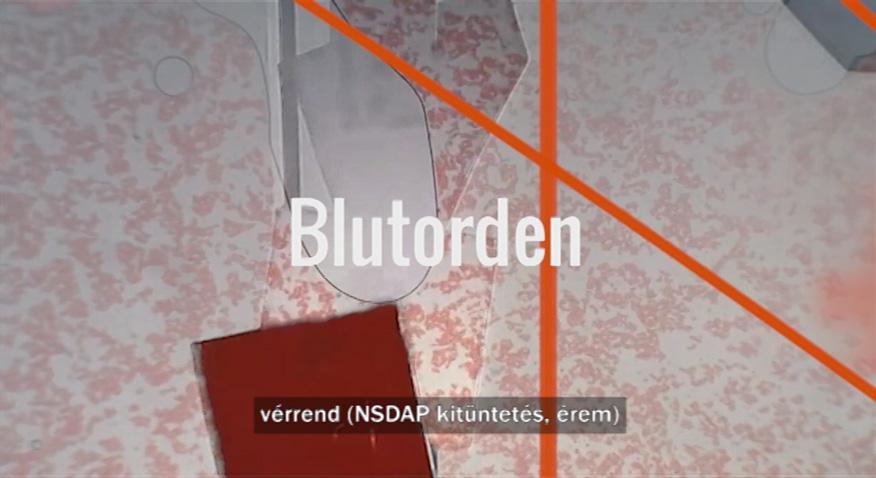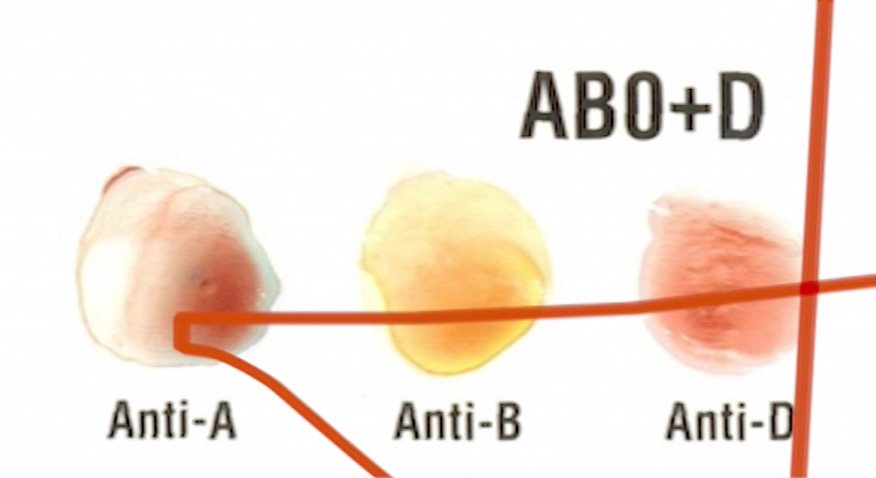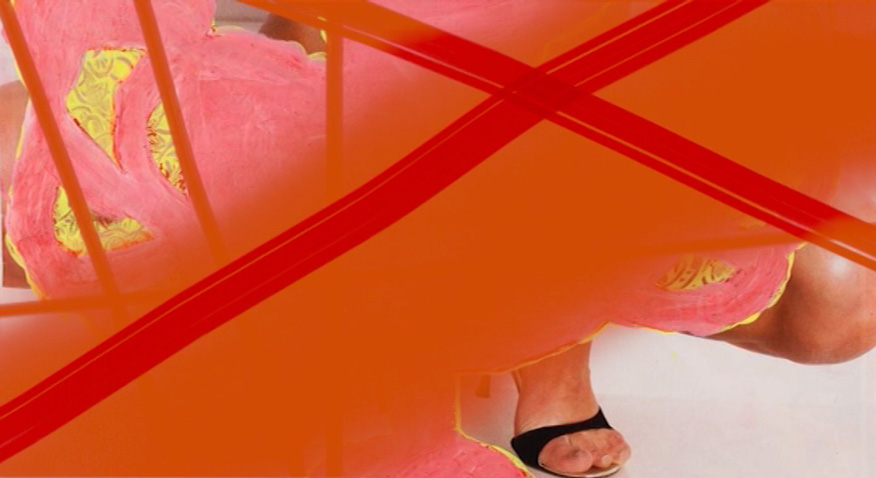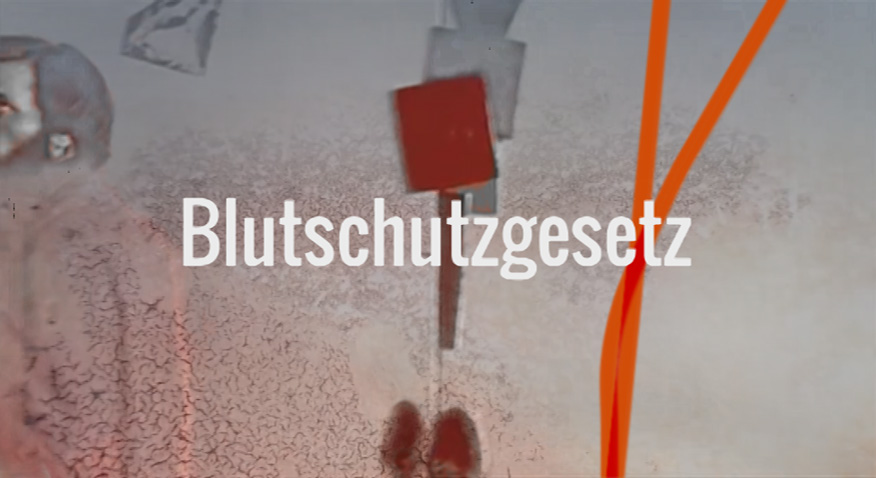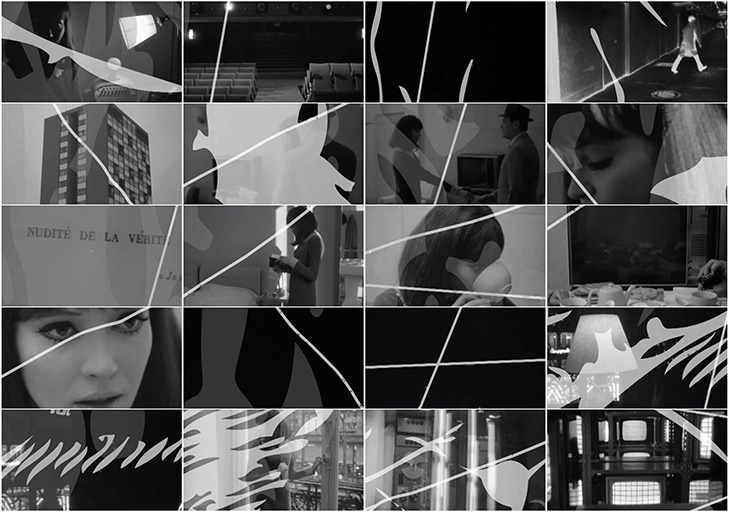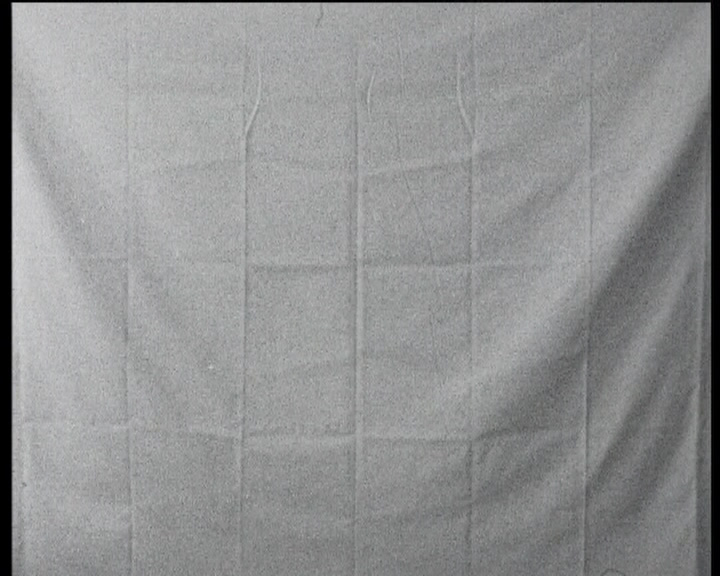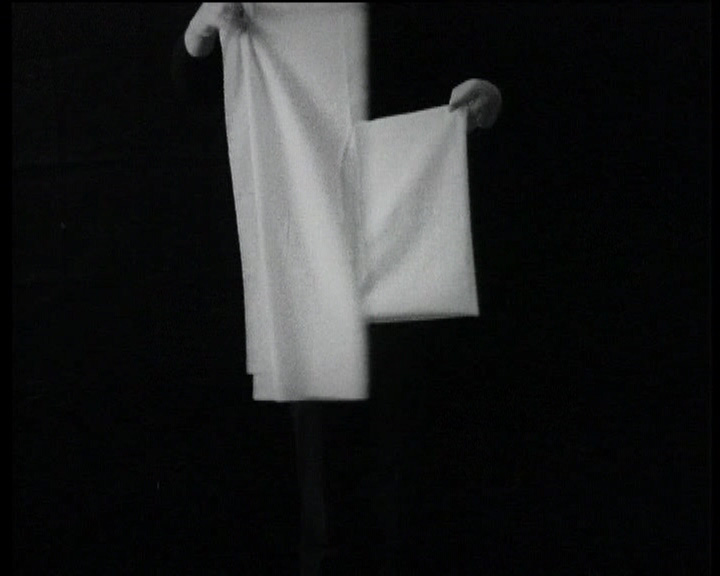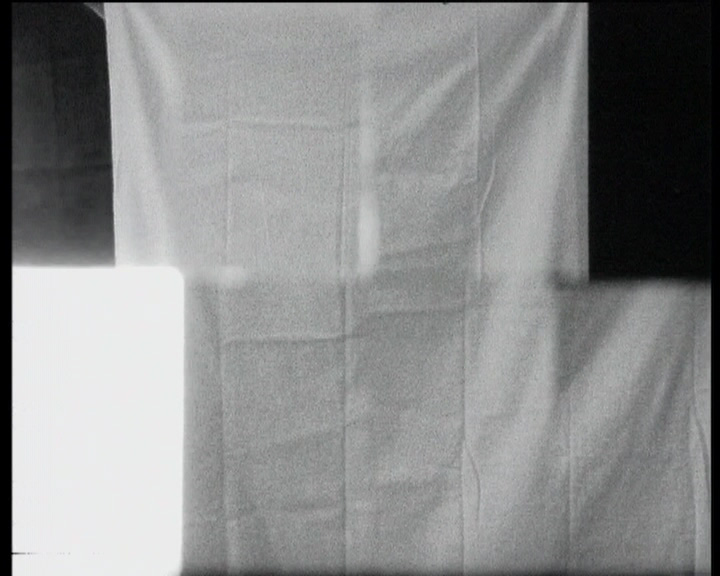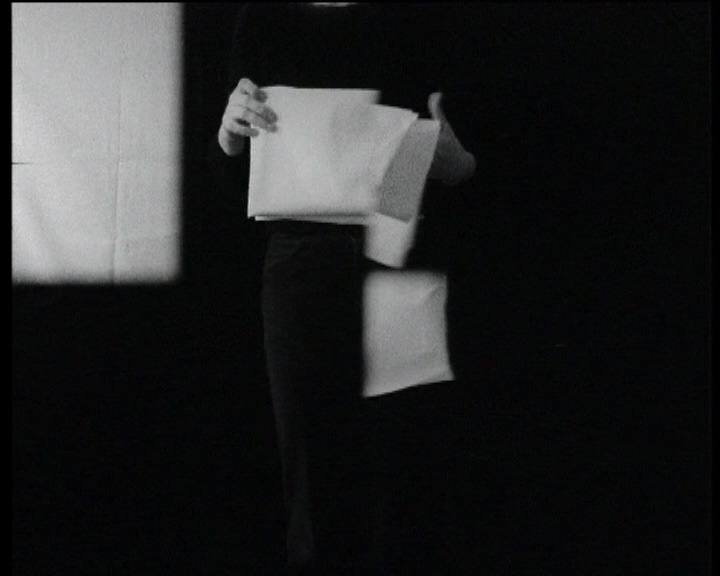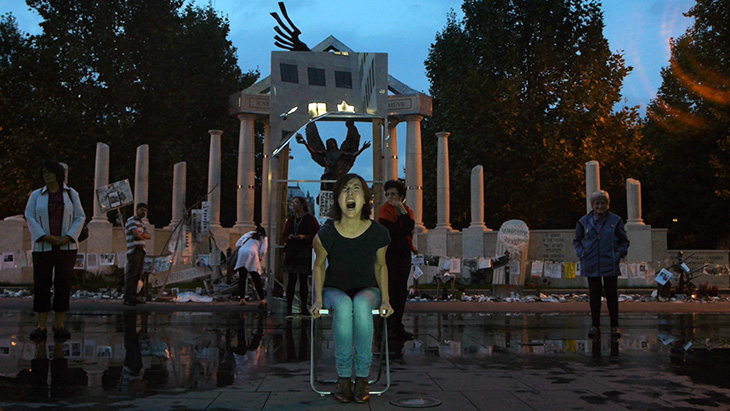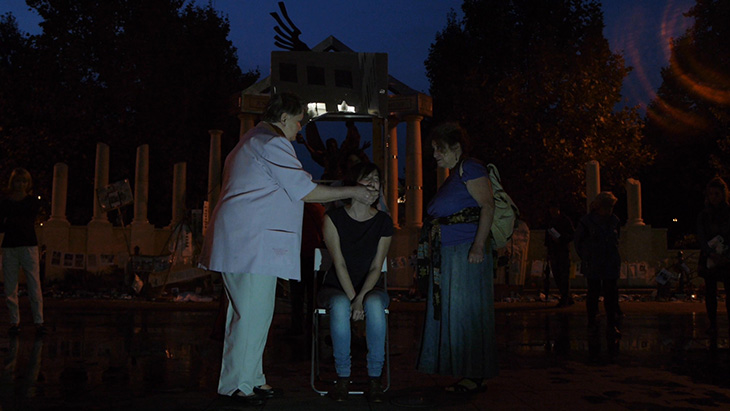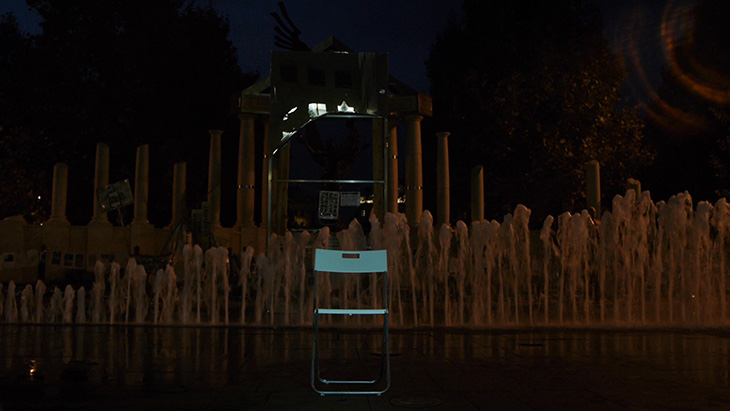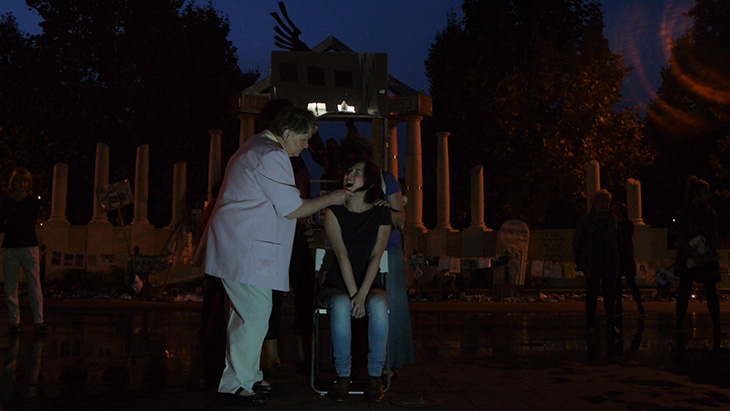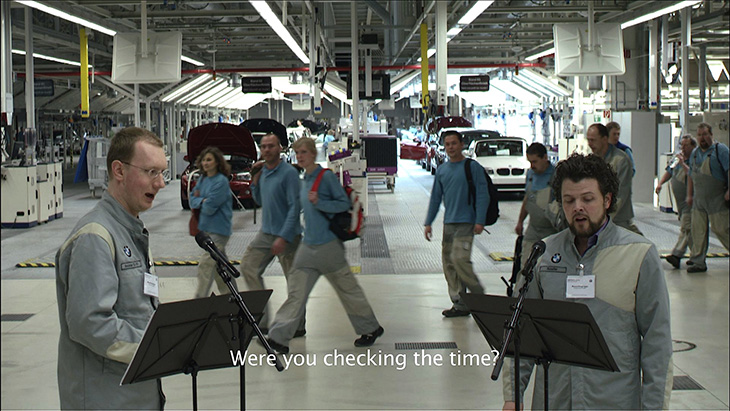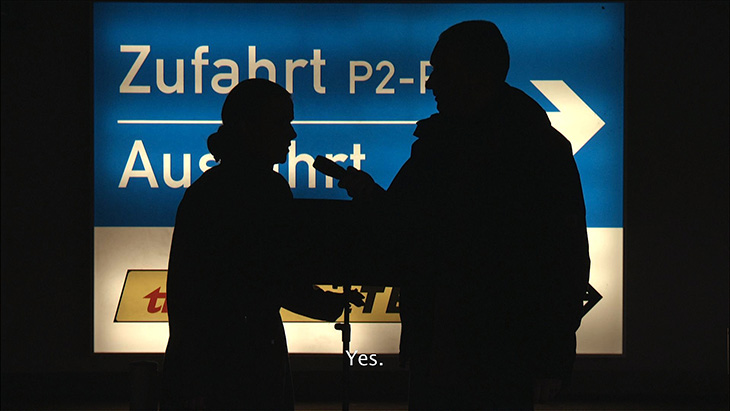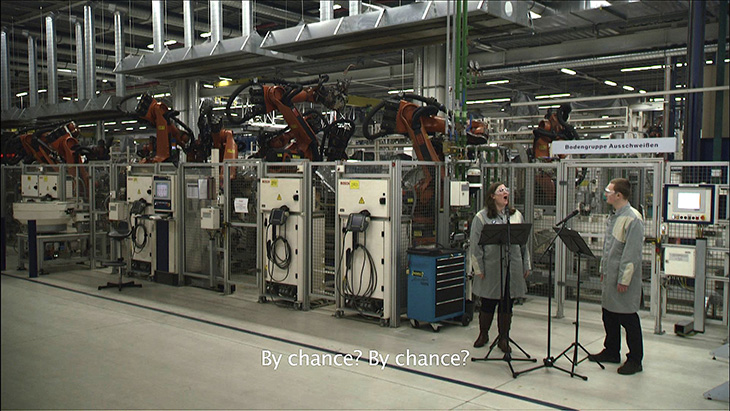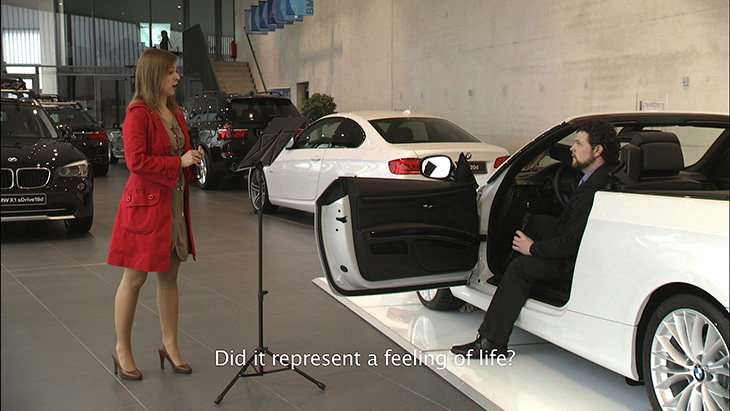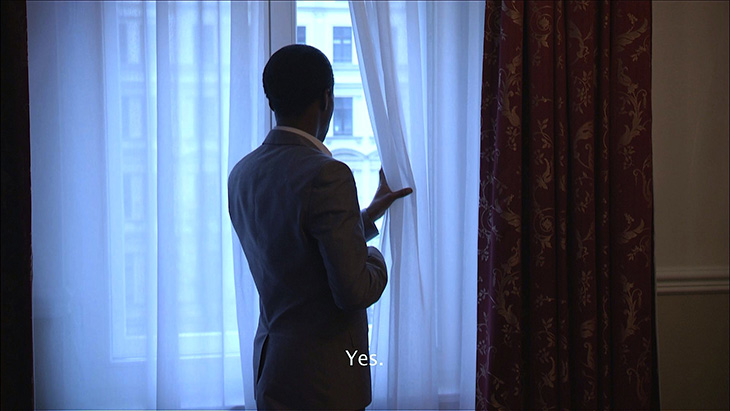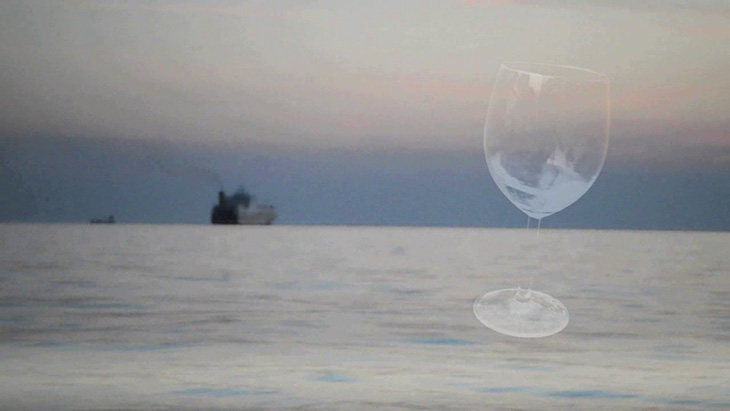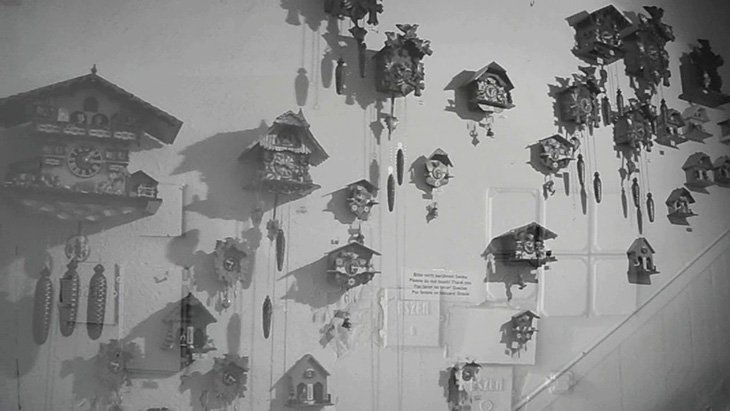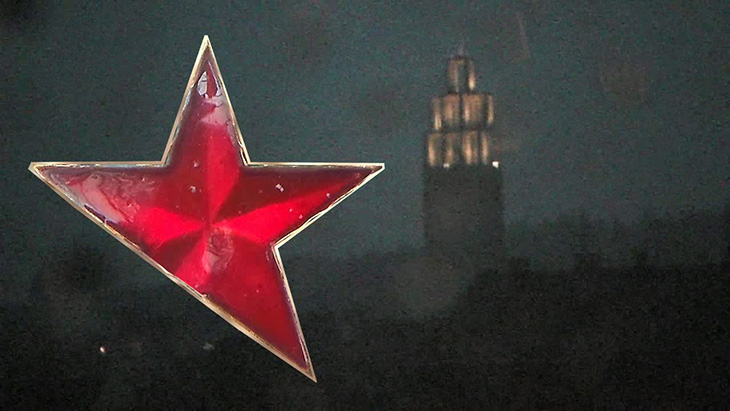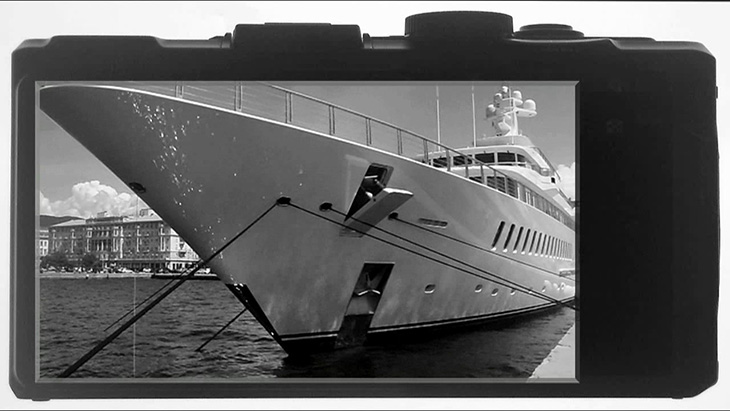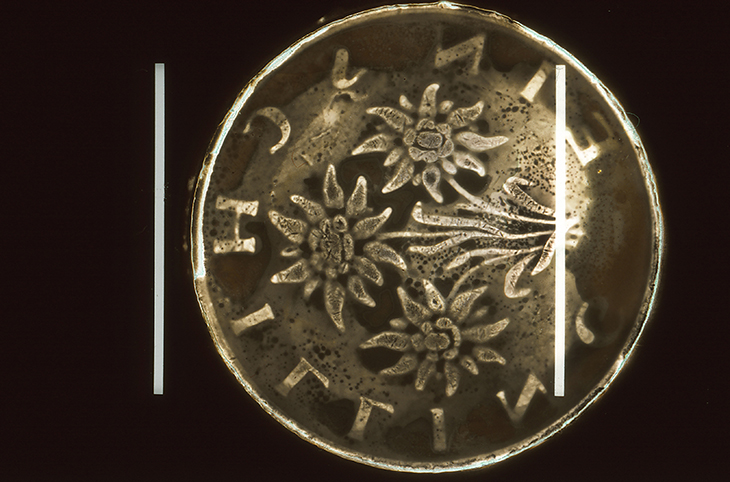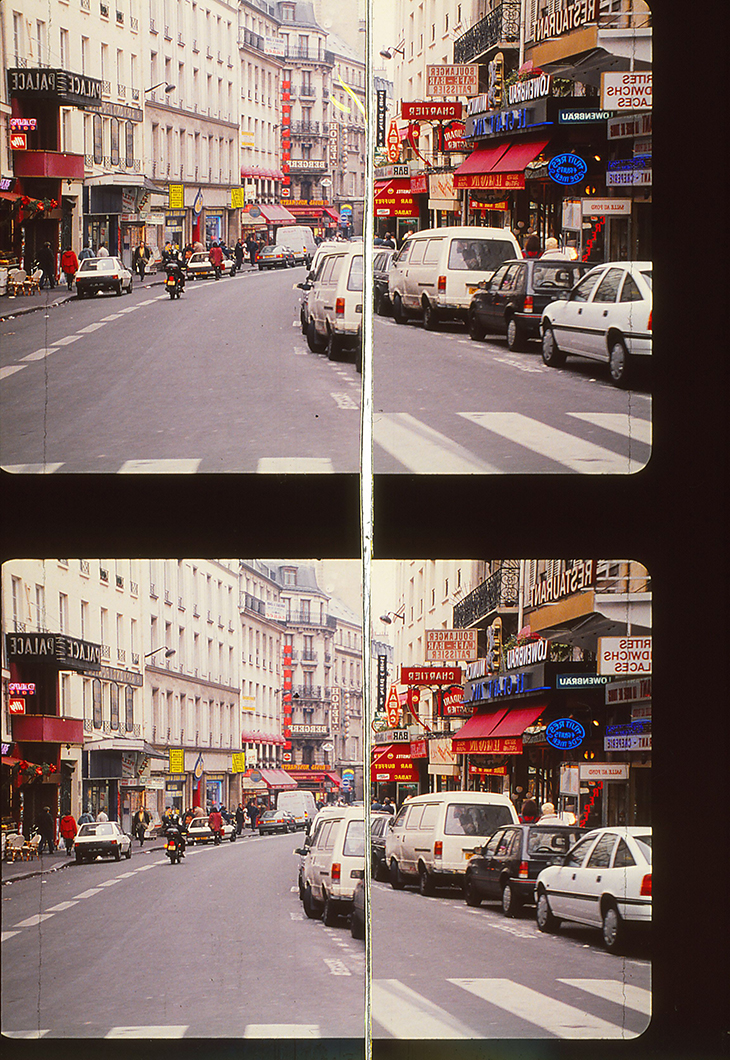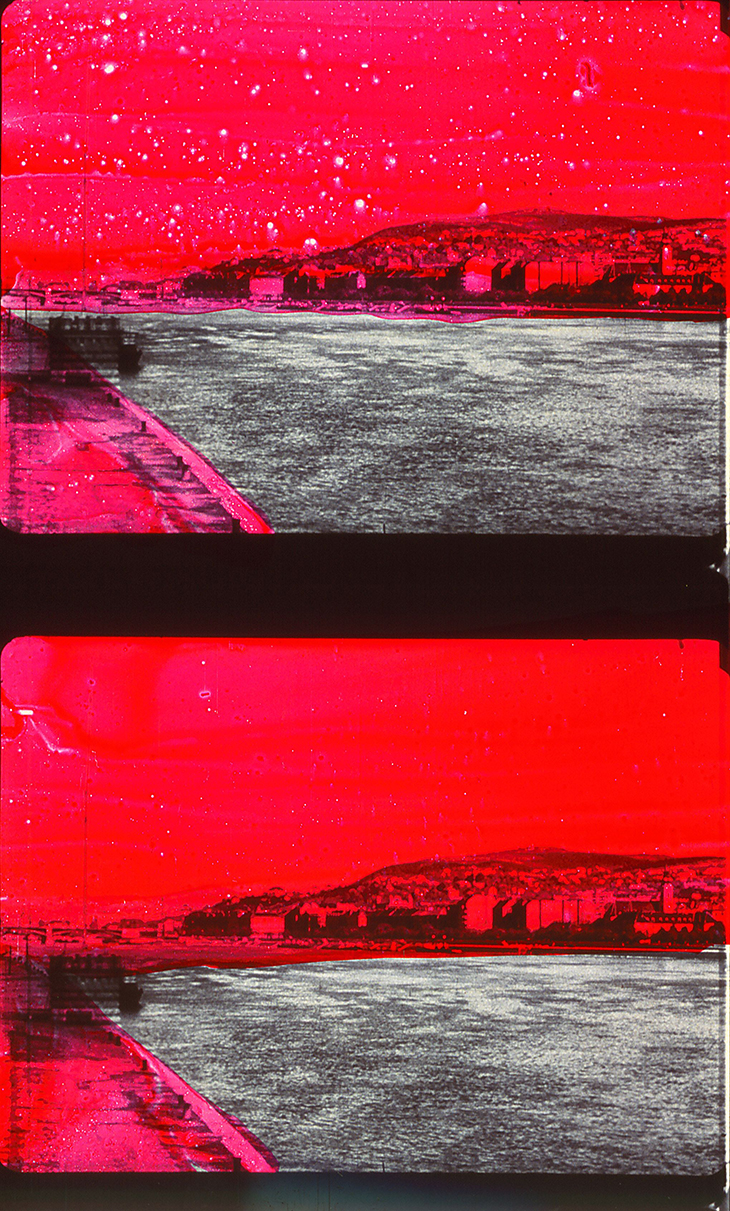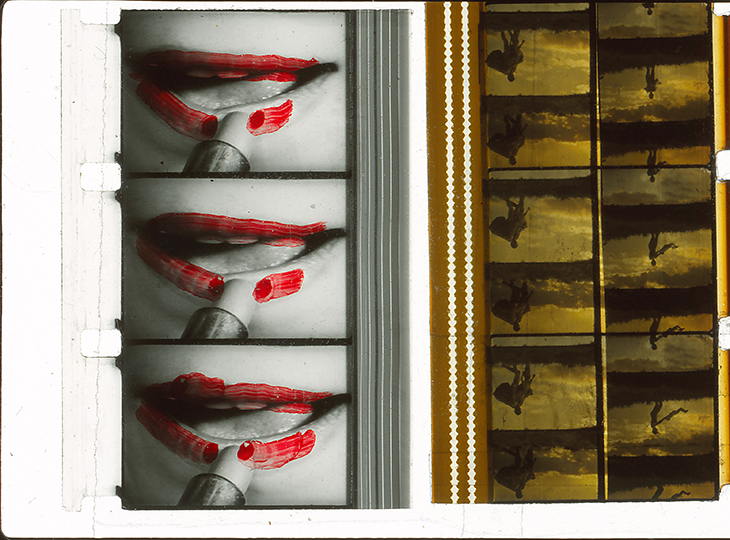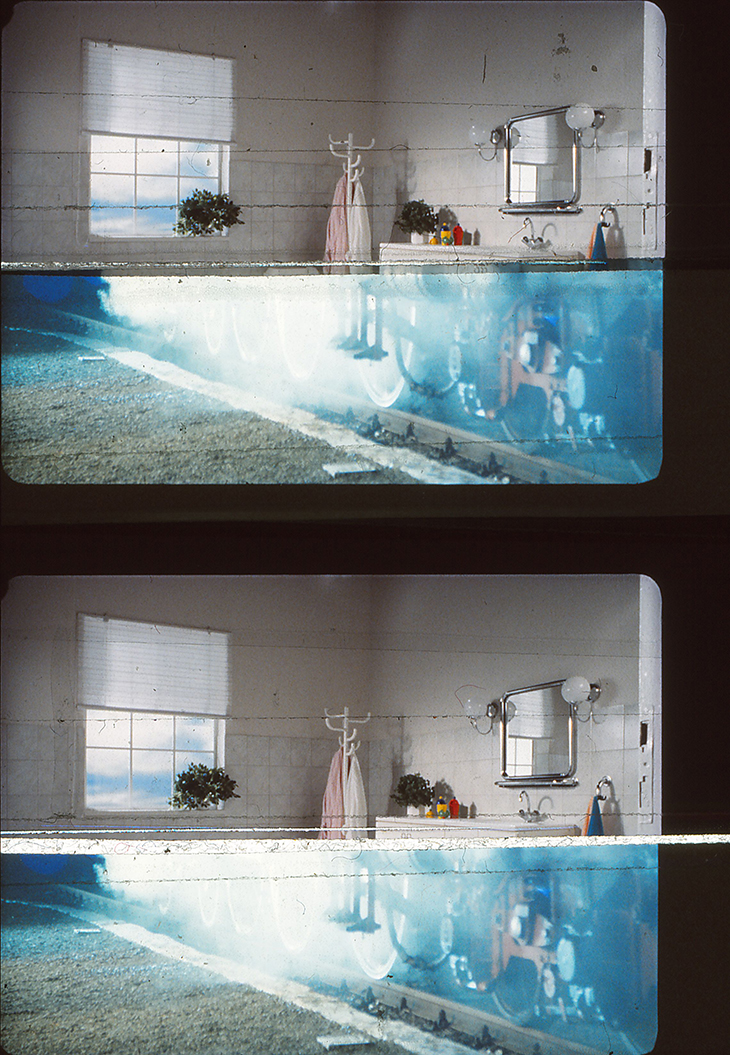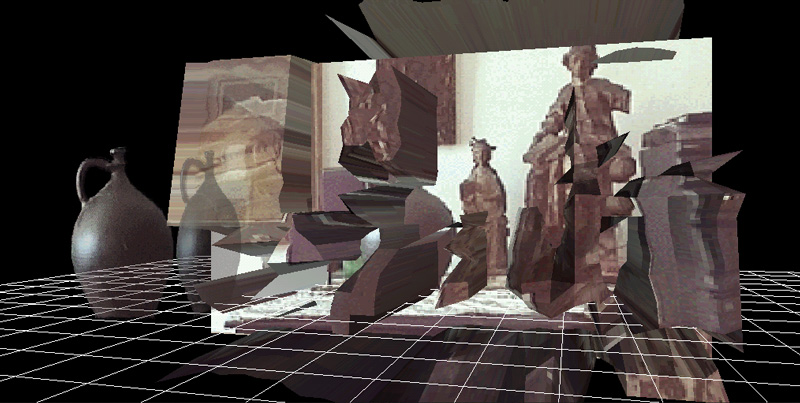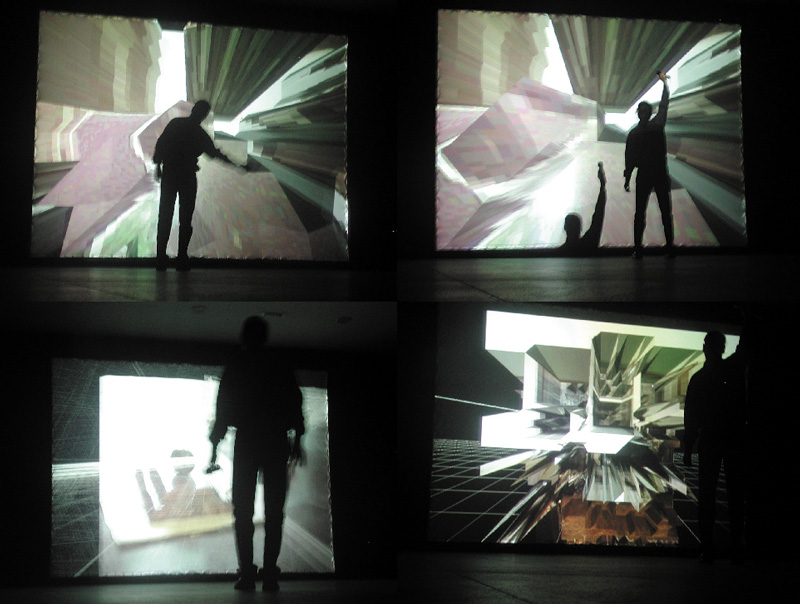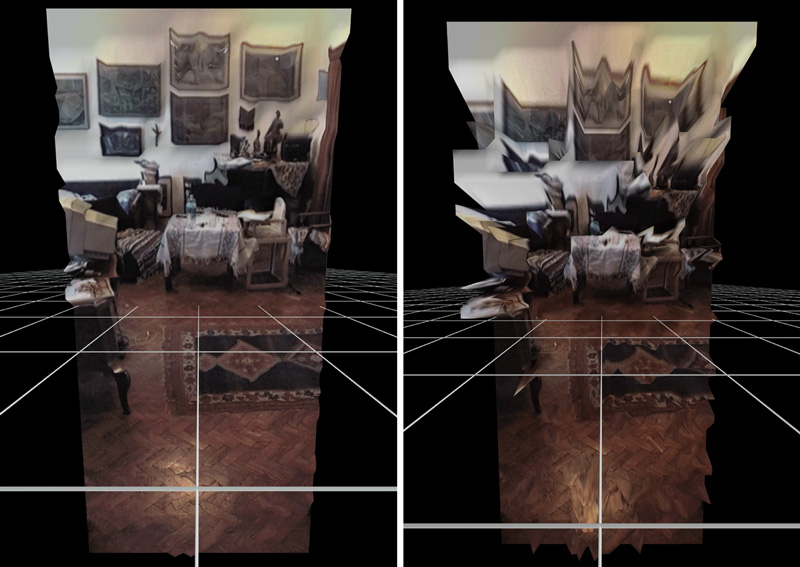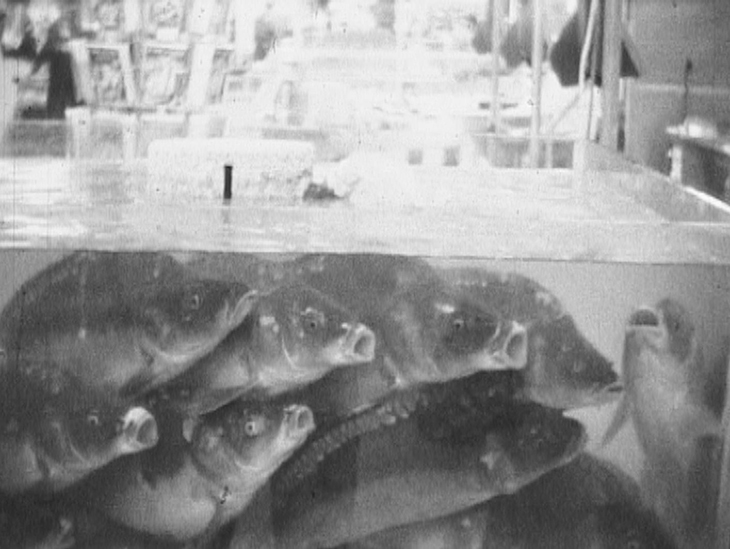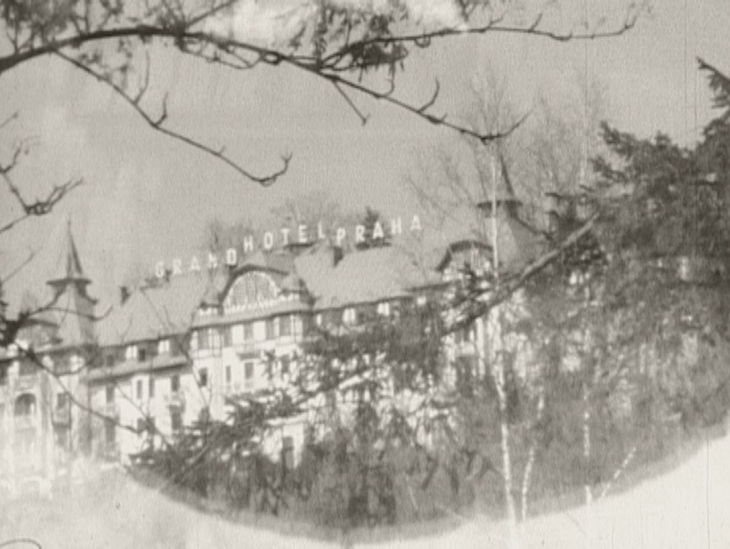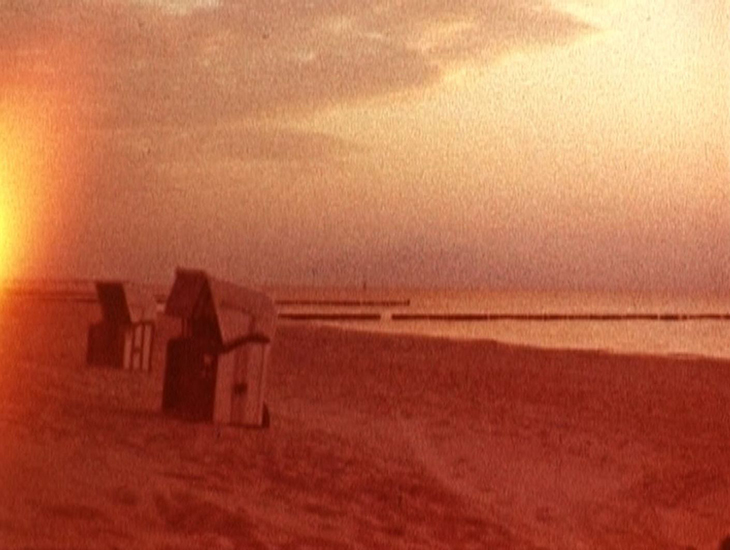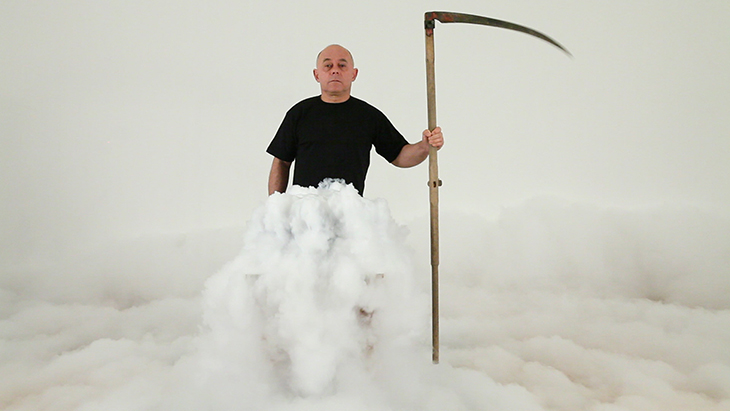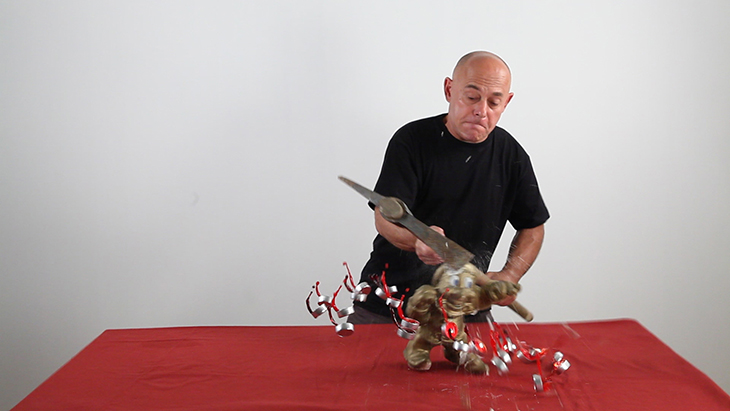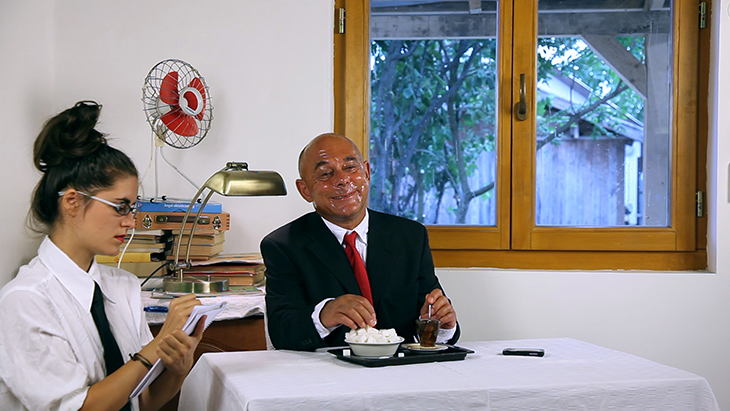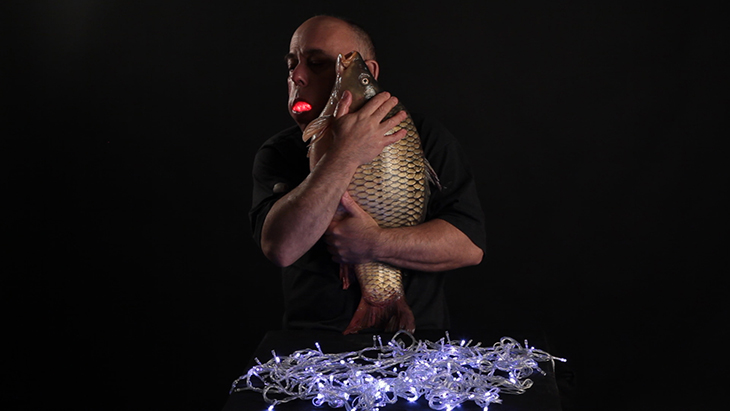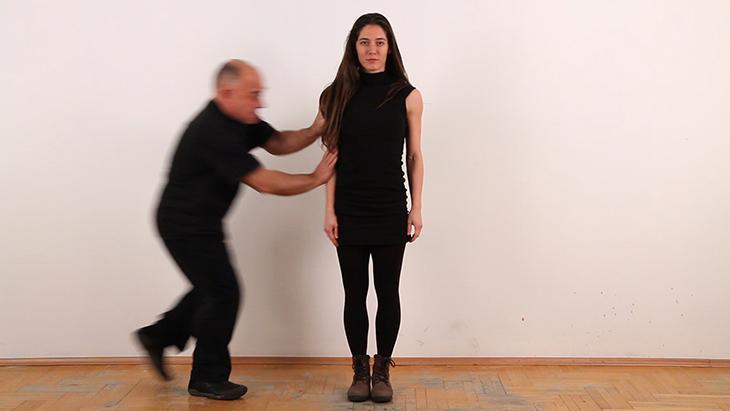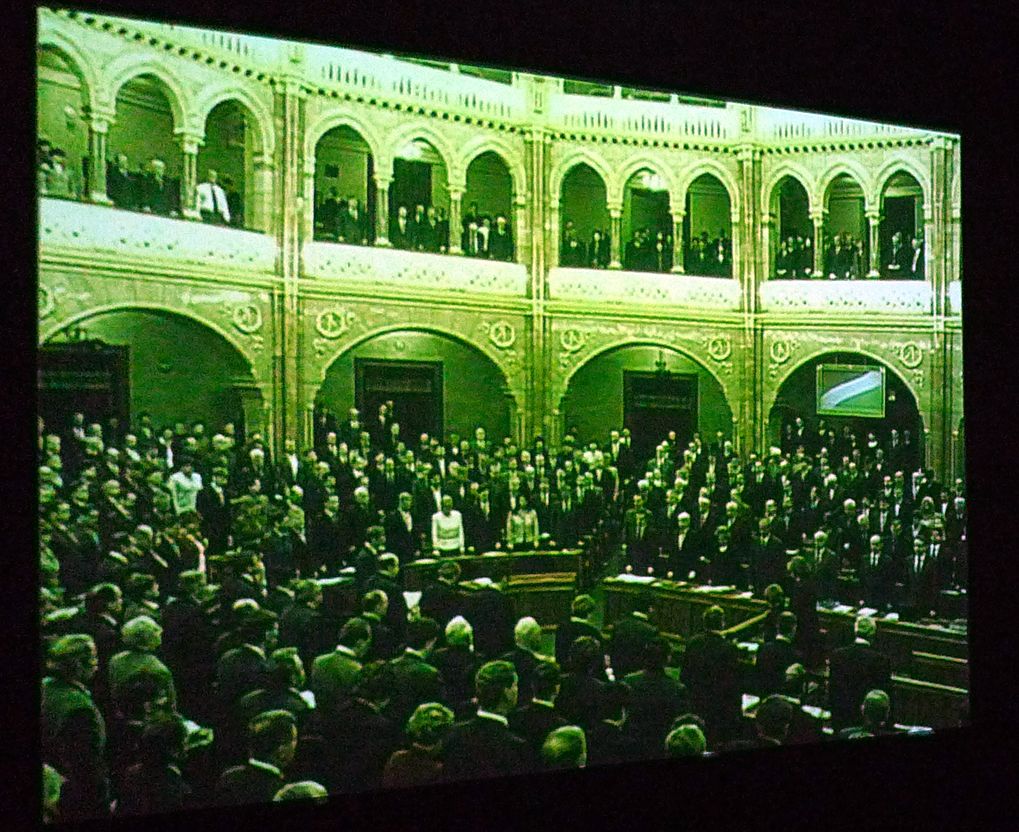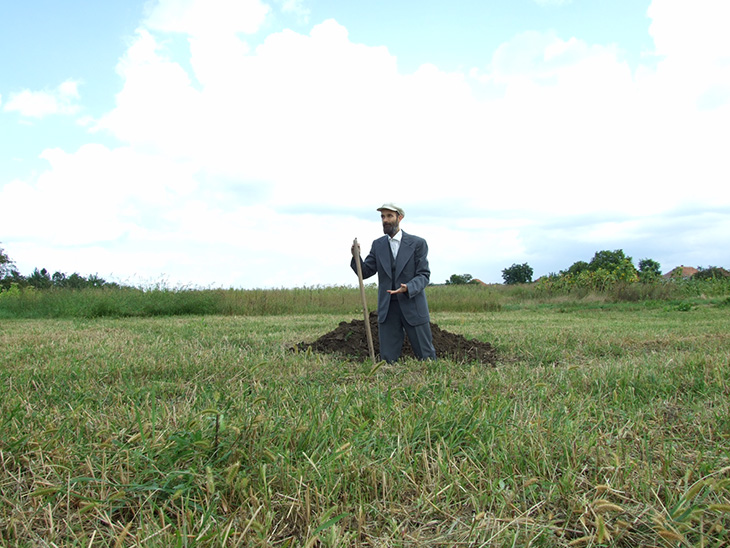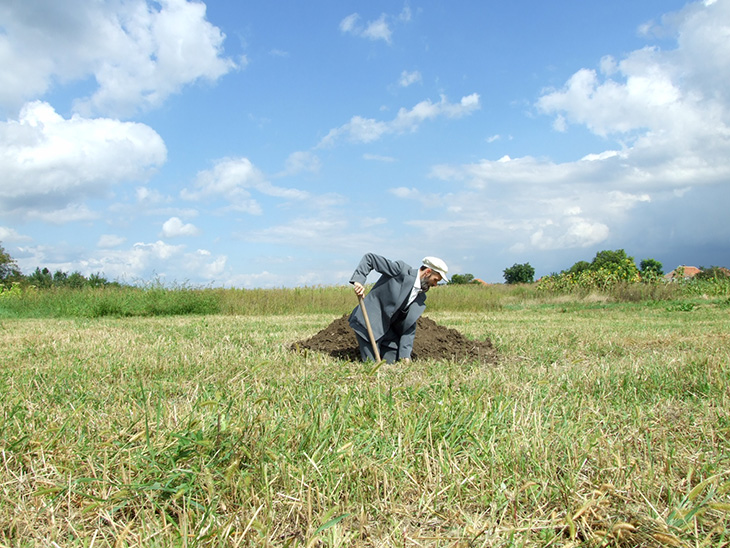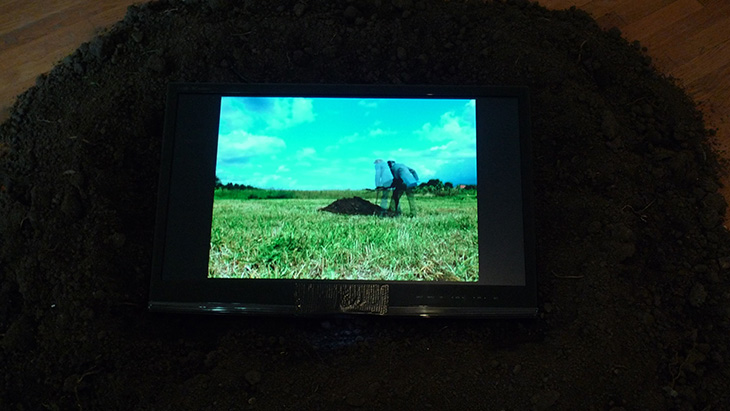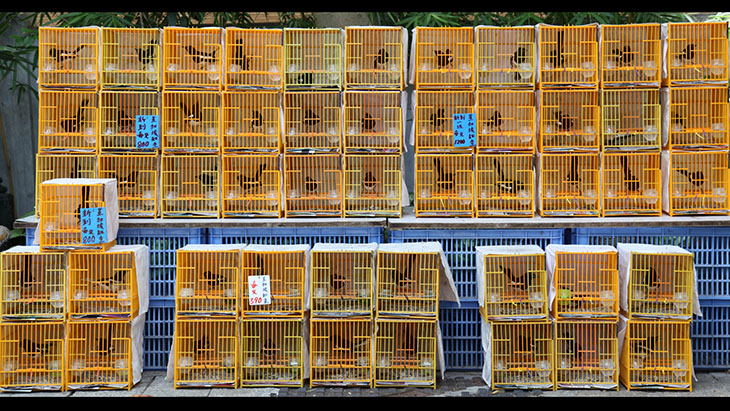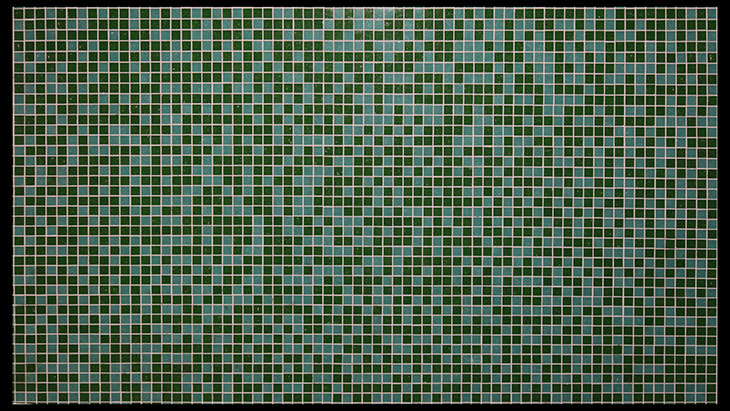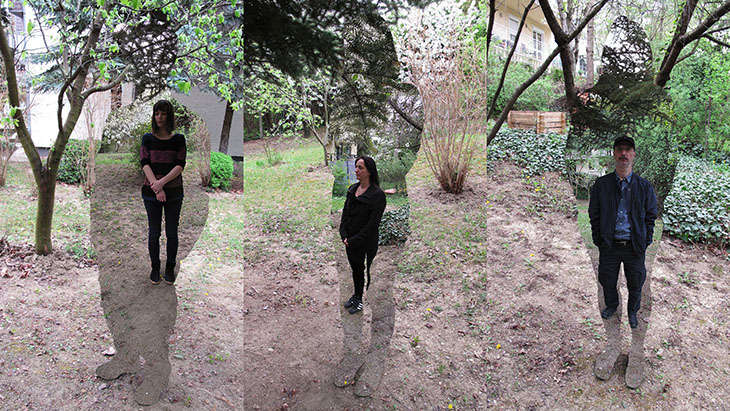BARNAFÖLDI Anna
“Text Parts to be Learnt by all Means”, 2015
installation, mixed media
“Text parts to be learnt by all means are highlighted with bold.”
With this sentence, the author indicates in the preface to a secondary
school history book why he used bold. I transformed a history book from
1977* and another from 2002** by cutting out only sections of text that
had been highlighted or underlined. I placed these next to one another,
glued them together, and presented them in the form of a roll, as an
installation. In the course of my work, I was very interested in the
selections that had been made by the authors, who were separated by a
period of about 25 years. What parts of these “texts to be learnt by all
means” remained, what changed, and what increased or decreased over time?
* Mátyás Unger: History for 3rd form high school students, 10th, revised
edition, Textbook Publisher, Budapest, 1977 [1967].
** Géza Závodszky: History III for Secondary schools, 7th revised edition,
National Textbook Publisher, Budapest, 2002 [1999].
BARNAFÖLDI Anna
Media étude, 2015
two digital videos, double projection, loop, 3.15 min
The basic idea of my work is to depict the ways in which a reflection on a
television screen and the continuously broadcasted television program interact.
We see two different storylines, which together create a new montage. Another
important aspect of video montage is elapsed time, since the video scene of
the reflection is slow and “real” (for example, the wind blows the curtain),
while I chose scenes from the television programs that are particularly fast
paced or involve rapid cuts (for example, Formula 1 coverage). The video is
projected onto the folding screen from two directions. On one side, the reflection
on the screen of the television, which has been switched off, can be seen; on the
other side, the television program can be watched against the same reflection. This
projected surface is totally different from conventional television-watching. Thus,
the familiar scene is made completely new.
GRÓF Ferenc / Société Réaliste
A Life to See, 2015
online film, 885 768 hours
Over the course of her career, Leni Riefenstahl shot and edited 10 hours, 1 minute,
19 seconds, and 10 frames of motion picture. She lived for 101 years and 17 days.
A Life to See is a film composed of the 901,985 frames authored by Riefenstahl,
edited in order to last as long as her life, 885,768 hours. The frames are projected
randomly and each of them appears only once, for a duration of 59 minutes. The
complete 601-minute soundtrack of Riefenstahl’s filmography is edited in chronological
order and accelerated to an overall duration of 59 minutes, repeated over each frame.
The projection of the film began on Friday, 17 February 2012 and will finish on
Tuesday, 7 March 2113.
Realisation:
SZŐNYI András & C3 Center for Culture & Communication Foundation, Budapest
Produced by:
Kadist Foundation, Paris; C3 Center for Culture & Communication Foundation
Courtesy of the artists and acb Gallery
KIS Judit
Contentment, 2015
installation of videos in a loop lasting fifteen minutes, the videos have the following
titles; I love you, Enough, Distance, Disillusion, Release, Detoxification, Dedication,
Adequacy, Contentment.
CONTENTMENT is a mental and emotional state in which a form of happiness is realized through
the acceptance of life situations. The word’s philosophical background emphasizes the ideal of
solace and healthy self-esteem in the name of slowness. Kis’ intention with the word ‘contentment’
is to summarize the videos that she made over the course of her university studies, emphasizing
the endeavour and the results of self-reflection and self-identification in her works..
KOMORÓCZKY Tamás
Bluten Tag!, 2014
video, colour, sound, 14 min
This video work was first presented as part of the exhibition series entitled Kritik und
Krise #3 – Ornament der Brüderlichkeit in the Collegium Hungaricum Berlin, organized at
the end of 2014. From a culturally unidentifiable point of view (the future?), the video examines
20th-century concepts, events and expressions which were connected in some manner to blood.
The narrative (which is read aloud) cites and endeavours to interpret from an outsider’s point
of view the biological and scientific concepts referring to blood, as well as notions created
during Nazi times which have since become part of history. During a language lesson centred
around understanding concepts – as a basic structure – a fictitious language student tries to
understand and correctly pronounce and repeat the foreign, German expressions after the
robot-instructor. The student receives additional information regarding the meanings of the
words. What holds together this language lesson is an abstract, multi-layered blood-textile-pattern
woven from drawn elements and images borrowed from films. The pictorial pattern is organized and
manoeuvred by a minutely constructed sound structure intended to aid the reception as a design
accompaniment to the words monotonously recited, one after the other.
KOMORÓCZKY Tamás
Milk Soup – Alphaville, 2014
video, b/w, sound, 1 min
“The term ‘milk soup’ was introduced into public speech after the publication of an article
by Tamás Szőnyei on legal affairs in the Hungarian pop music scene (Magyar Narancs, 1999/14.
Lawsuits in pop music. Who is it hissing to?). As a consequence, the term milk soup was used
to refer to a particular set up, namely when artists wished to back out of a production, but
their hands were tied due to the contract with the publishing company, which compelled them
to continue. Under these circumstances, the only reason the production was actually made was
a matter of legal obligation, not the creation of something of artistic value. The product
created under these pressures is subject to further controversy. Does a 40 minute-long sound
qualify as an EP? And who is entitled to judge whether it does or does not? A board of trustees?
Komoróczky lays out Godard’s Alphaville, a presumed or real ‘milk soup’, his only science
fiction movie, shot without special effects, – in which the watchwords of regulated existence
reappear: ‘Silence – Logic – Security – Prudence’ – as a carpet consisting of black-and-white
film stills.”*
* Based on the following essay: SZILVI NÉMET: Komoróczky Tamás: A tejleves mint erőltetett
egzisztencialista metafora (Tamás Komoróczky: Milk Soup as a Forced Existentialist Metaphor,
HiggsField, Budapest, 2014)
MAURER Dóra
Timing, 1978/1980
publisher: SUMUS Wien-Budapest
camera: GULYÁS János, STOCKER Károly
16 mm experimental film, b/w, silent
10 minutes, digital copy
Dóra Mauer’s film and her visual analysis can be regarded as an emblamatic work of the exhibition
Timebase. According to László Beke “Timing is one of Mauer’s chef d’oeuvres, one of the purest
examples of ‘artistic film’” (Maurer Dóra mozgóképei. Az összehajtogatott idő / Dóra Mauer’s Films.
Folded Time,
http://www.filmvilag.hu/xista_frame.php?cikk_id=9769).
Judit Király writes, “The film’s action is minimal: [Maurer] folded a bedsheet of two arms’
length width, in other words a sheet defined by the dimensions of her own body, first into two,
then into four, then into eight, then into sixteen, then into thirty-two, then into sixty-four
and finally, making use of the material’s full potential, into one-hundred-and-twenty-eight
parts (i.e. 7 folds). A unique feature of the recording is that the side proportions of the
sheet correspond to the picture frame of the 16 mm camera. […] This correspondence of the
proportions makes it possible to project the film onto the same sheet that was used in the
making of the film.
The film consists of four main parts, the first part shows the basic act of the sheet being
folded seven times, while the subsequent parts were made with various masks placed in front
of the camera lens: halving (2nd part), quartering (3rd part) and in the final, 4th part
using a mask that divides the frame into eight sections. In these cases, the film was only
exposed in the areas that were not covered by the mask, in other words: one half, one quarter
and one eighth of the picture frame. For this reason, two recordings were made for the second
part, four recordings were made for the third part and eight recordings were made for the
fourth part, with the film being rewound several times in order always to start the recording
at the beginning. Thus, in the final film the ‘scene’ is visible on the entire picture. […]
With regards to elapsed time, the film measures not hour-time, but subjective time. There is
no absolute measuring unit, only time units referring to one another, some of which can be
equal and which together form a comparison-order. Before each new fold, the unfolded sheet
filling the entire area of the picture field appears for five seconds.” (Judit Király, Maurer
Dóra munkásságának matematikai vonatkozásai. The Mathematical References of Dóra Mauer’s Work,
http://members.iif.hu/[...])
The artist kept the sheet which she used during the filming, so we are able to project the
digitally converted film onto the original sheet. An exhibition space endows every object with
a cultic aura, especially since Walter Benjamin claimed otherwise. The original canvas, the
empty canvas thus not only provides an occasion for us to perceive it as a film, as a structured
representation, but as an exhibited object it appears for a brief time when the looped film ends
and has not yet started again. The film is not original in its medium, but it is in its spirit.
Back when only analogue video technology existed for the electronic conversion of 16 mm celluloid
film strips, the film’s author was faced with the problem that while the film is shown at a speed
of 24 frames per second, in the case of a video this is 25 half-frames (30 in the case of other
standards), and this difference results in a modification of the original sequence. This problem
disappears with the computer: here the film is a single file which the software can play at any
given speed – including the original speed.
MONHOR Viktória
Danger Music #17, 2015
performance, video documentation
colour, sound, 20.24 min
video: Balla Zoltán
special thanks: Hollós István, Tóth Balázs
Scream! Scream! Scream!
Scream! Scream! Scream!
Dick Higgins, 1962
Danger Music #17 is a Fluxus piece from Dick Higgins’ 1960s series of scores entitled
Danger Music. The objec-tive of this particular score is simple: scream until exhaustion.
I performed this piece in Budapest’s Szabadság tér (Freedom Square) on 19 September 2014
within the framework of a social movement called Living Memorial – This Is My History.
More specifically, this performance took place in the centre of the interactive fountain
that is in front of the memorial called German Occupation of Hungary on 19 March 1944.
The following layers converge at this location: the fountain, continuously being blocked
by the audience; the vertical reflective surface that was erected there by an arts
organization called Krétakör, and which was damaged some days later; the personal objects
(living relics) which were placed in front of the memorial as part of an effort organized
by the Living Memorial; the Memorial itself and the various public issues it signifies and
which it is intended to address; and finally, the act of documenting this performance, as
carried out by the police. Before and after the performance, a conversation was held,
with professional moderator János Sugár (visual artist), and with guests Zsolt Sőrés
(experimental musician), Endre Szkárosi (poet, performer), and Annamária Szőke
(art historian); the conversation was moderated by Balázs Horváth.
The location of the performance makes the interpretation of the piece somewhat obvious
and simple, but the piece also articulates a more general meaning as well. The “function”
of this performance was not to please or entertain, but – given the meanings of its setting
– to represent a critical attitude. The upsetting effect of this performance brought the
audience into an uncertain state, because it operated on an instinctive level. Let out with
full force and full presence, the almost 18-minute-long scream pervaded the entire body of
the performer, and this effect also “infected” the audience: the sounds articulated something
without the aid of language, which captivated the audience deeply, on a physical level.
This performance was documented on video, which was made available on the Internet. The
appearance begot other appearances; therefore the view count (47,200) and the number of
comments grew exponentially. These effects on online media are similar to the uncertainty
and alarmed state experienced by the audience during the live performance of the piece.
Analysis of the commentary that came with the online articles is in process. It seems to
go in diverse directions – pointing beyond facts concerning the current and future state
of the culture of online commenting (nationally) and the quality of online media publications.
Many of the comments are representative of far right-wing rhetoric and reflect states of mind
incapable of thought or discussion. The main objective of the Living Memorial is to help change
these states of mind.
NÉMETH Hajnal
Crash – Passive Interview, 2011
experimental operatic film in 12 acts
re-edited version: 72 min
full HD, stereo
written and directed by: NÉMETH Hajnal
performers and collaborators:
Xenia ROMASHOVA (soprano), Jana KURUCOVÁ (mezzo), Susanne GRITSCHNEDER (alto),
Gregory WARREN (tenor), Nathan De’Shon MYERS (baritone), Tomasz WIJA (bass)
Kinderchor Canzonetta Berlin, choir leader: Jochen WITTUR
piano: Virginia EHRHARDT, Matthias SAMUIL
cello: David Sills
music: Reggie and Cornelia Moore; Georg Friedrich Händel – Lascia Ch’io Pianga, ária a Rinaldóból
camera: IMREH István
camera assistant: LOVAS Péter
sound recording: Volker SCHANER, Dino GROBE, Yensin JAHN, Studios Saal3 Berlin
post-production: NÉMETH Hajnal, Volker SCHANER, Yensin JAHN
producers: C3 Kulturális és Kommunikációs Központ Alapítvány, FuFoo Film GmbH, NÉMETH Hajnal
partner in realization: BMW Group Cultural Communications, BMW Leipzig Plant
made in: 2011, Berlin, Leipzig
languages of the video: English and German, with Hungarian subtitles
Hajnal Németh’s installation entitled Crash – Passive Interview was presented in the Hungarian
Pavilion at the 54th Venice Biennale in 2011. One of the main components of the work was an
operatic film of the same title which was originally 90 minutes long and which is now presented
at the New Budapest Gallery in a newly edited version lasting 72 minutes.
The video work is simultaneously playful and serious. Its improvisational and strictly composed
“histories” are all connected to automobiles, a simultaneously cultic and practical product of
our civilization. The libretto of the musical work is based on twelve “passive interviews”,
which opera singers have transformed into musical forms and performed inside an automobile
factory, in the BMW factory in Leipzig and in other locations. One could venture the claim
that this work is about the borders of chance and inevitability in a pure, easily comprehendible
structure with simple tools. In addition to the twelve improvisational units of music, a short
aria is sung about freedom and another song about life and death is performed by a choir.
“The sight of a totalled car is shocking indeed, as the energy of the crash is imprinted
in its shape, its creases and deformations. Most of us are probably interested in the underlying
story: how did the accident happen? Did they survive?
Related by a survivor, the catastrophic moment is slowed down by memory to an extreme version
of the most minute detail, going back even to the very beginning of the fateful day, as if he
were exploring the relationship between cause and effect, and his decisions, which eventually
and irrevocably led to the crash.
In this slow replay I examine the resettling after the shock, the ‘comforting’ explanation
for the unavoidable crash. But the fact that the outcome of this story is predetermined – as
indicated by the yes-no questions of the sung inner monologues – is far from comforting. The
opera genre is intended to convey this tension.
The story begins at a car factory, and thus the story of the car, its ‘life,’ which is ended
by the crash, ironically takes the place of human life at some points.”
RÉVÉSZ László László
On the Way to Cythera, 2012
video, colour, sound, 5.01 min
One Wall, Two Sides, 2012
video, b/w, sound, 3.08 min
Polmix, 2012
video, colour, sound, 4.40 min
Someone is Holding My Nose, 2012
video, b/w, sound, 6.38 min
HUFA Intermedia traditional filmmaking course
Selection of works made by the students of Mária Rigó, 2010–2015
works by
FARKAS Rita, HORVÁTH Zsófia, HUSZÁR Ildikó, KEMÉNY Zsuzsa, KIS Antal,
KORPONOVICS Roland, KRISTÓF Gábor, TULISZ Hajnalka
edited by Norbert Plaß KATONA
digital copies of 16 mm and 35 mm films, colour and b/w, silent
22 min
0.10
TULISZ Hajnalka
Colour–play
3.05
HUSZÁR Ildikó
Montage–hunger
4.45
KORPONOVICS Roland
Streams of Balance
8.35
HORVÁTH Zsófia
The Creation
11.55
KEMÉNY Zsuzsa
Angelic Levitation
14.30
KIS Antal
Niceties
15.40
FARKAS Rita
Nisan
19.20–22.00
KRISTÓF Gábor
The Meeting
SZÉCSÉNYI-NAGY Loránd
In the Mirror of a Medium, 2015
electro-mechanical selfie, multimedia installation
This work was created with the use of the oldest known cordless tool used for
sending films, the Nipkow, a mechanically spinning disk which was a fundamental
component in mechanical television. The remarkable capability of this tool, which
appeared in the 1920s, was that with it, one could broadcast programmes between
places at great distances from each other without using wires, only with the aid
of radio signs. Due to the structure of the Nipkow disk a low resolution arched
image consisting of only a few columns appeared on the apparatus. In the present
case, the transmission and projection systems were built both in one, thereby
creating an electro-mechanical mirror. Thus, when looking at the picture we see
an image of ourselves in the mirror of this technical medium.
SZEGEDY-MASZÁK Zoltán–FERNEZELYI Márton
Promenade, 1998–2002
interactive virtual reality installation, stereo version
The project Promenade seeks to examine the connections between “real” and virtual
space, “real movement” and the illusion of motion. Using the handheld navigation
device the visitor can explore virtual rooms by taking a walk in the real space
of the exhibition room. The unusual spatial illusions displayed in the halls of
Promenade address the ambiguous relationships between the three-dimensional space
and its two dimensional representation as perceived from a dynamic, moving viewpoint.
The interface of Promenade is an ultrasonic position tracker built into a torch:
the position measured by the tracker directs the position of the viewpoint in the
virtual space. By walking in the exhibition room while holding the navigation-device,
the visitor can explore the dynamically changing virtual space, in which the geometry
of the scene is continuously being modified according to the viewer’s motion. By
approaching the projection screen (virtually stepping through the picture), the visitor
can step into a new space: at a certain distance the virtual world will automatically
switch to the next room, where other perspective-tricks await the visitor.
SZEMZŐ Tibor
We’d Laugh Together, Fool Around and Go Swimming – Dr. Kafka’s Last Smile, 2014
Hungarian short movie
written by: FORGÁCH András, SZEMZŐ Tibor
director-composer: SZEMZŐ Tibor
Budapest Film Produkciós Kft.
colour and b/w, sound
25.09 min
Franz Kafka not only won the admiration of posterity with his writings. In his very person
he had an even stronger impact on the individuals who were really close to him, and for whom
being with him was the wonder of friendship. The young poet who visited him at his workplace,
the Workers’ Accident Insurance Institute; the medical student who was with him in the sanatorium;
the kitchen-girl at a Jewish orphan camp at a German seaside resort, with whom he later lived in
Berlin and who remained at his side till the very end; the little girl in a playground whom he
consoled for the loss of her doll: these people didn’t see in him a writer genius, but a human
genius, sometimes even a saint: they enjoyed his sparkling conversation full of humour, his
ideas, and his incomparable attentiveness.
SZIRTES János
Pro/Contra, 2013–2015
I have been doing live performances for more than thirty years. The foremost
challenging and the most crucial thing in performance art for me is that no
performance can be repeated. The one-off, unrepeatable event takes place
directly in front of the audience. Once I was asked to write down summaries
of my past performances. Due to the enormous number of events, I ultimately
failed to write them all down. I had to relive these performances. Additionally,
I had to document somehow my recollections of ideas that had faded long ago.
At the same time, I kept trying not to duplicate them.
Since 2013 I have been recording video performances, ‘performance etudes’.
To date, they number over two-hundred. In these opuses I elaborate motives
and events of my past performances, but the new actions steadily take the
place of earlier ideas. This method undoubtedly allows me to reinterpret
earlier themes and therefore stimulates the creation of brand new ‘performance
etudes’. These artworks are recorded in front of a camera instead of a live
audience.
Albeit live action has remained of high importance for me to this day, I do
not want to be dependent on invitations, galleries, or curators. I think I
have more things to tell than the number of possibilities I get to express
myself. This is why I turned towards another forum, namely to social networking
sites on which I can share my works and through which I can get explicit feedback.
This way, direct effect and reflection do occur. When my audience gives me signs
that I am repeating myself (or whenever I myself realize I am repeating myself),
I will put an end to this series.
I have chosen the spaces for my actions. In the vast majority I work on the worn
wooden floor and in front of the empty wall of a classroom in an abandoned school.
In a few cases I record them at outdoor places as well. These artworks are
characterized by fixed composition, close-ups, and minimalistic use of tools.
I dissolve the loneliness of the single performance artist with partners, as I
regard communication and collaborative thinking as crucial to performance art.
At the beginning, my attitude was defined by the title of the video. The videos
entitled ‘Pro’ convey ideas that I can stand by. I made videos bearing the titles
‘Contra’ and ‘Against’ to express my antipathies as well. For a good while, I
realised that the title ‘Pro’ can cover the whole scope of things that I would
like to tell.
The length of my video performances depends on the online interfaces on which
I share them with my audience. On these forums, long videos are not appreciated.
The deliberately limited range of tools and the plain place of the scenes, as
well as the compressed actions, all determine the length of the works.
Albeit I follow my intuitions in my choices of themes, recently I have started
dealing more and more actively with current social phenomena.
I. Curator’s choice
- János Szirtes 2013 ‘PRO’ No. 01 (0.50) Közzététel / Published:
2013. 01. 21. © János Szirtes, 2013. Cinematography: Ágnes Éva
Molnár. HD quality is the property of the artist.
https://www.youtube.com/watch?v=iQXqHHu2_sQ
- János Szirtes 2015 ‘PRO’ No. 109 (0.56) Közzététel / Published:
2015. 02. 28. © János Szirtes, 2015. In collaboration with Gábor
Juhász. Cinematography: Gábor Juhász. HD quality is the property
of the artist.
https://www.youtube.com/watch?v=wQCPaM-E0ZA
- János Szirtes 2013 ‘CONTRA’ No. 12 LEADER (2.45) Közzététel
/ Published: 2013. 09. 14. © János Szirtes, 2013 with participation
of Enikő Fodor. Mezőszemerei Nyílt Tér Művésztelep, 2013.
https://www.youtube.com/watch?v=EfVC3whAAOU
- János Szirtes 2014 ‘PRO’ No. 57. (1.39) Közzététel / Published:
2014. 01. 10. © János Szirtes, 2014. In collaboration with Beatrix
Simkó. HD quality is the property of the artist.
https://www.youtube.com/watch?v=jav-T_jplGg
- János Szirtes 2013 ‘PRO’ No. 12. (2.24) Közzététel / Published:
2013. 04. 04. © János Szirtes, 2013. In collaboration with Miklós
Erhardt. Cinematography: Ágnes Éva Molnár.
https://www.youtube.com/watch?v=NHZcUXJyPXw
- János Szirtes 2014 ‘PRO’ No. 73. (0.56) Közzététel / Published:
2014. 03. 22. © János Szirtes, 2014. Inspired by the performance of
Lászlo feLugossy – János Szirtes entitled NEW BREASTS in 1993. In
collaboration with: Ágnes Éva Molnár.
https://www.youtube.com/watch?v=vI6Du1I8lvs
- János Szirtes 2015 ‘PRO’ No. 125 MEZOSZEMERE (0.29). Közzététel
/ Published: 2015. 09. 13. © János Szirtes, 2015. Cinematography:
Ágnes Éva Molnár. HD quality is the property of the artist.
https://www.youtube.com/watch?v=Bpz4nDJ0xUc
- Laszlo feLugossy & János Szirtes 2013 ‘PRO’ No. 47. (9.10) Közzététel
/ Published: 2013. 11. 10. © János Szirtes, 2013. 3. MissionArt Vasgyári
Művésztelep, Miskolc / 3rd MissionArt Artists’ Retreat at the Iron Factory,
Miskolc (HU). HD quality is the property of the artists
https://www.youtube.com/watch?v=cy-338J-UHg
- János Szirtes 2013 ‘PRO’ No. 29 LISBON (0.29) Közzététel / Published:
2013. 07. 28. © János Szirtes, 2013. With the support of Galerias Municipais,
Lisboa (PO) & Budapest Gallery, Budapest (HU). Cinematography: Ágnes Éva Molnár.
https://www.youtube.com/watch?v=ROUbhGm8JGw
- 10. János Szirtes 2014 ‘PRO’ No. 76. (4.30) Közzététel / Published:
2014. 04. 13. © János Szirtes, 2014. In colla- boration with Ágnes
Éva Molnár. Special thanks to András Böröcz and László Révész.
https://www.youtube.com/watch?v=NdZkB1sOqJ8
- 11. János Szirtes 2014 ‘PRO’ No. 100. (2.01) Közzététel / Published:
2014. 12. 18. © János Szirtes, 2014. HD qua- lity is the property of
the artist. Cinematography: Ágnes Éva Molnár.
https://www.youtube.com/watch?v=SQS7U5kqRCY
- 12. János Szirtes 2014 ‘PRO’ No. 69 (0.59) Közzététel / Published:
2014. 02. 23. © János Szirtes, 2014. Concept: Anna Fabricius – János
Szirtes. In collaboration with Anna Fabricius.
https://www.youtube.com/watch?v=Nlhb25OCxQM
II. Artist’s selection
- Contra 01.
- Against 07.
- Against 08.
- Pro 13.
- Contra 10.
- Against 10.
- Pro 32.
- Pro 42.
- Pro 36.
- Pro 43.
- Pro 44.
- Contra 16.
- Pro 60.
- Pro 75.
- Pro 83.
- Pro 99.
- Pro 104.
- Pro 110.
- Pro 112.
SZOLNOKI József
One Minute, 2015
video, diagram
the size of the picture: 30×36 cm
courtesy of Hungarian State Television (MTVA)
In the course of a commemoration held by the Parliament – irrespective of
its nature – only the chair of the Parliament or the president presiding
over the meeting can request a one-minute standing commemoration.
(Universally applicable standpoints of the
House Committee of the Parliament)
VÁNDOR Csaba
QR loop, 2013
VÁNDOR Csaba
“I’ll go down to live underground...”, 2012–2013
video installation
“I’ll go down to live underground, so nobody will push me around
I’ll have a house built that will have no window made”
An old, little-known Hungarian folk song can be heard
in the video included in the installation.
The shifted temporal planes and the fundamental archaic work search for coincidences
with the exhibition’s common tone.
Digging and the documentation of digging, as well as the filled-in hole, were parts
of an action in the garden of Imre Bukta in Mezőszemere. The monotonous process,
as a possible form of measuring time, provided the basis for the installation,
which the work eventually buried underneath itself.
We circumscribe the sensible or senseless work, the symbol of the hole
dug out and filled in.
As far as what we are looking for underground is concerned, or what is underground,
it will remain perhaps underneath the surface forever.
WALICZKY Tamás
Micromovements in Snapshots, 2014
one channel video installation
the original video is in HD (1920×1080) resolution, 5.37 minutes, played in loop
Animation is the illusion of movement. Movement happens in space and time.
SPACE. My work consists of six short animations. Each animation is based on one
photograph. Each photo contains several visual elements, and each photo creates
its own space.
TIME. Each animation is approximately one minute long. Each animation starts
with a photo as a still image. There is no movement. Then the camera presents
details of the photo. It moves first slowly, then more rapidly. At a certain speed,
parts of the photo are not independent elements anymore. The speed generates
animation: elements of the photo generate the illusion of movement.
This video decodes and presents the snapshots’ own micromovements.
My idea was to show the movement existing in these still images. In other words,
I wanted to make animation using the visual elements of just one photograph. Usually
one has to produce hundreds of images to create an animation. I use selected parts
of one photograph as frames of an animation. My installation shows that visual elements
of certain photos can be translated as movement.
concept, images, animation: WALICZKY Tamás
photography: WALICZKY Tamás
artistic adviser: SZEPESI Anna
copyright © 2014 by Tamás Waliczky & Anna Szepesi
WALICZKY Tamás
Reflections, 2014
one channel video installation
the original video is in 4K (3840×2160) resolution, 6.14 minutes, played in loop
“Experience of oneself is always mediated; only experience of others is direct.
Just as we are unable to see our face except in a mirror, we are unable to see our
inner self other than by reflection, and it is the latter that creates awareness.
Contact with others also entails contact with ourselves, and the self of personal
identity is simply not available to us without communication and interaction. It
is an awareness of oneself that at the same time involves awareness of the
expectations of others and our resultant obligations and responsibilities.”
(Jan Assmann: Cultural Memory and Early Civilization: Writing, Remembrance, and
Political Imagination. Cambridge UP, 2011.)
concept, images, animation: WALICZKY Tamás
photography: WALICZKY Tamás
artistic adviser: SZEPESI Anna
copyright © 2014 by Tamás Waliczky & Anna Szepesi



